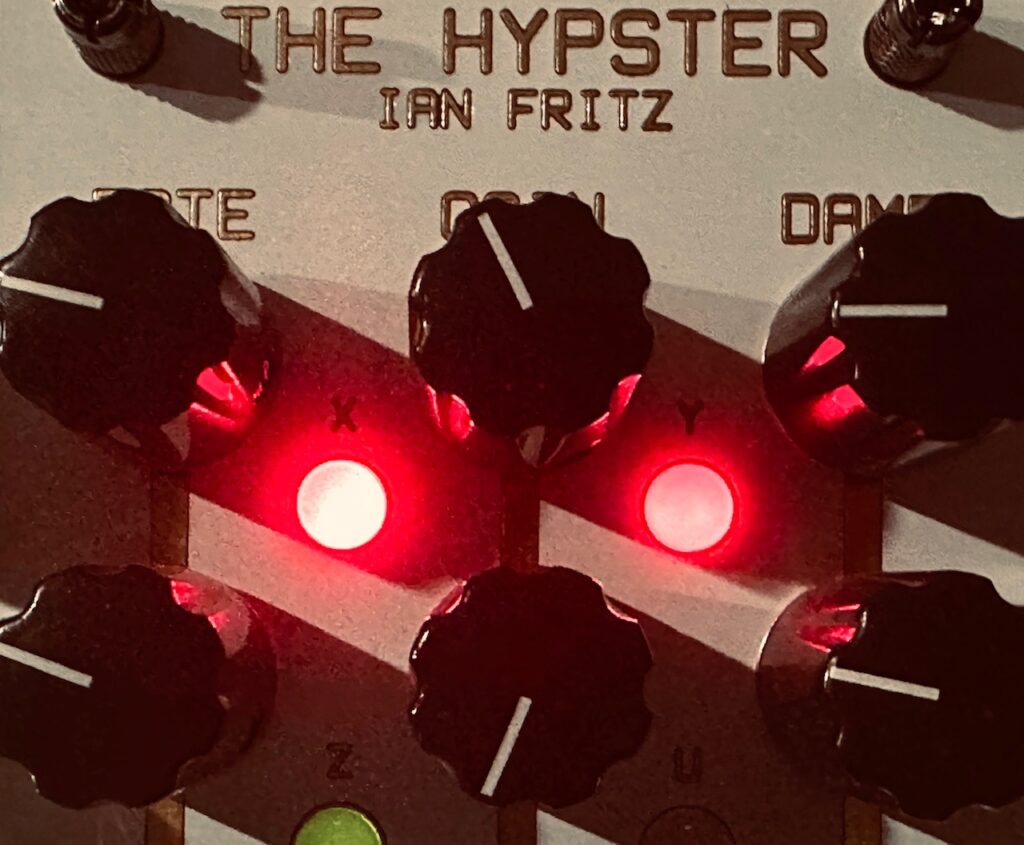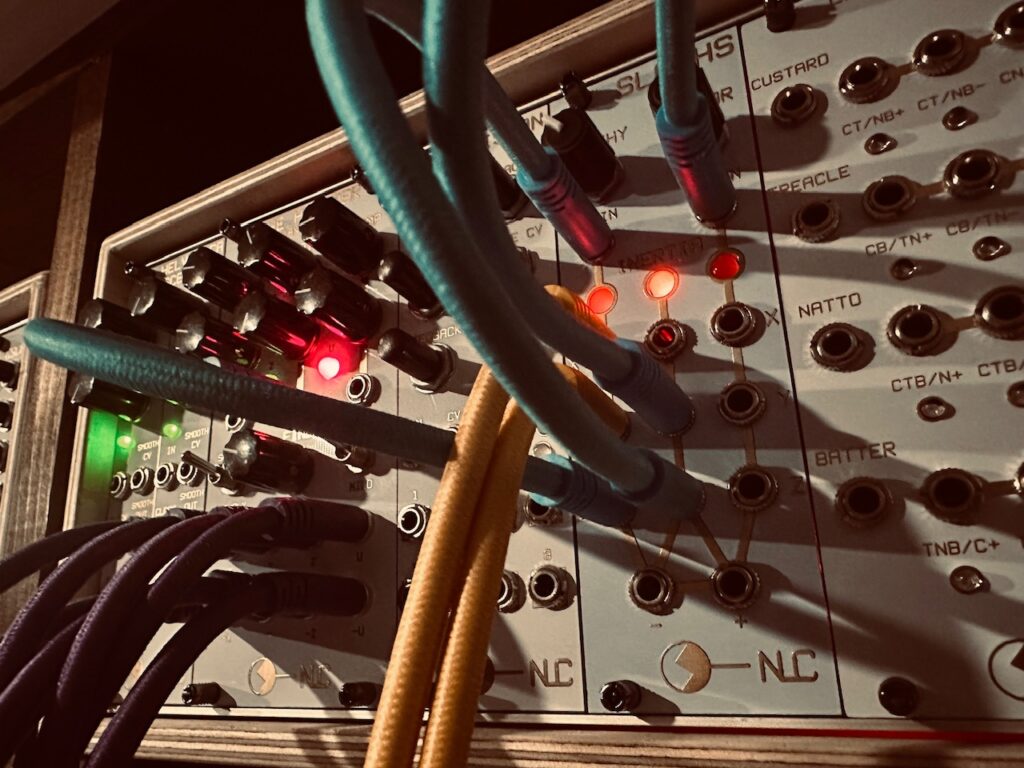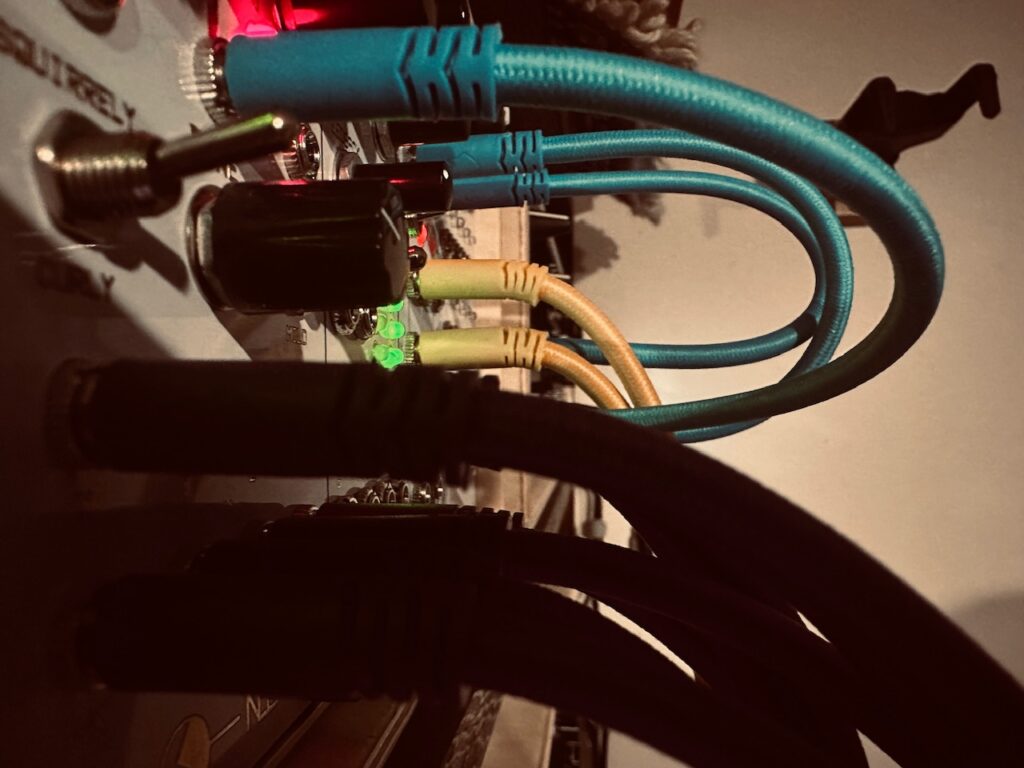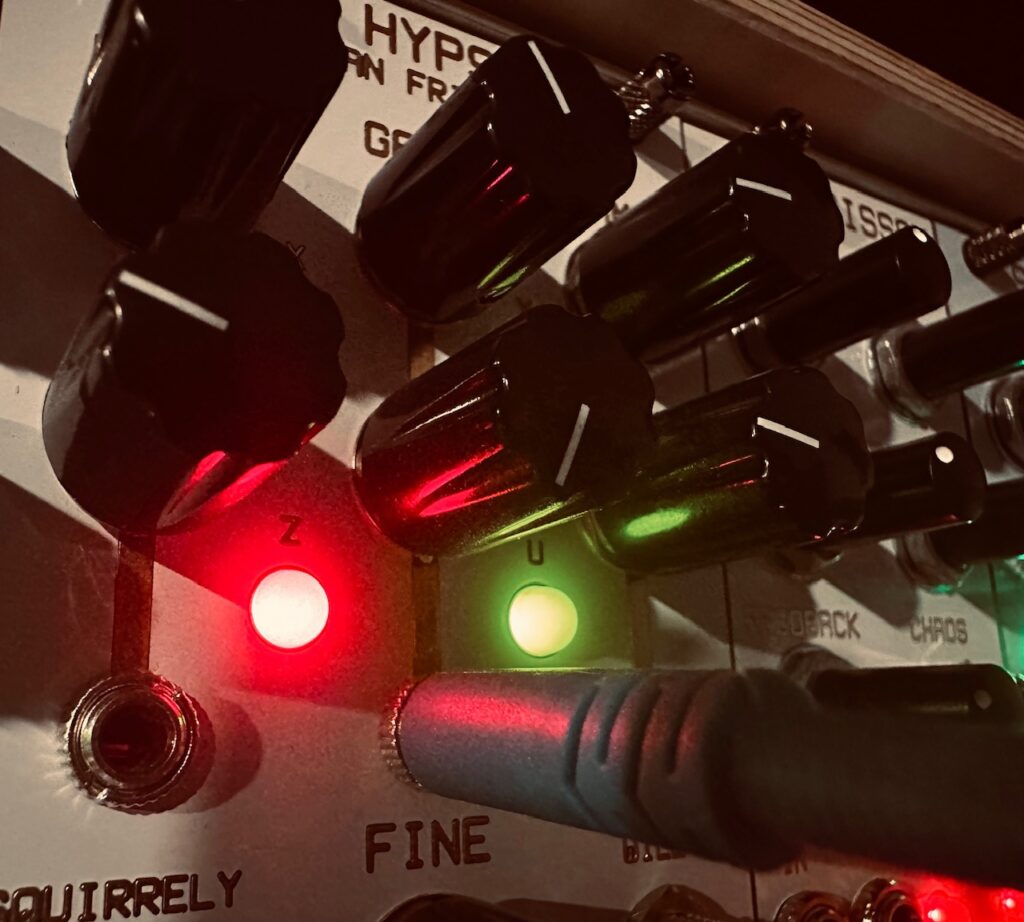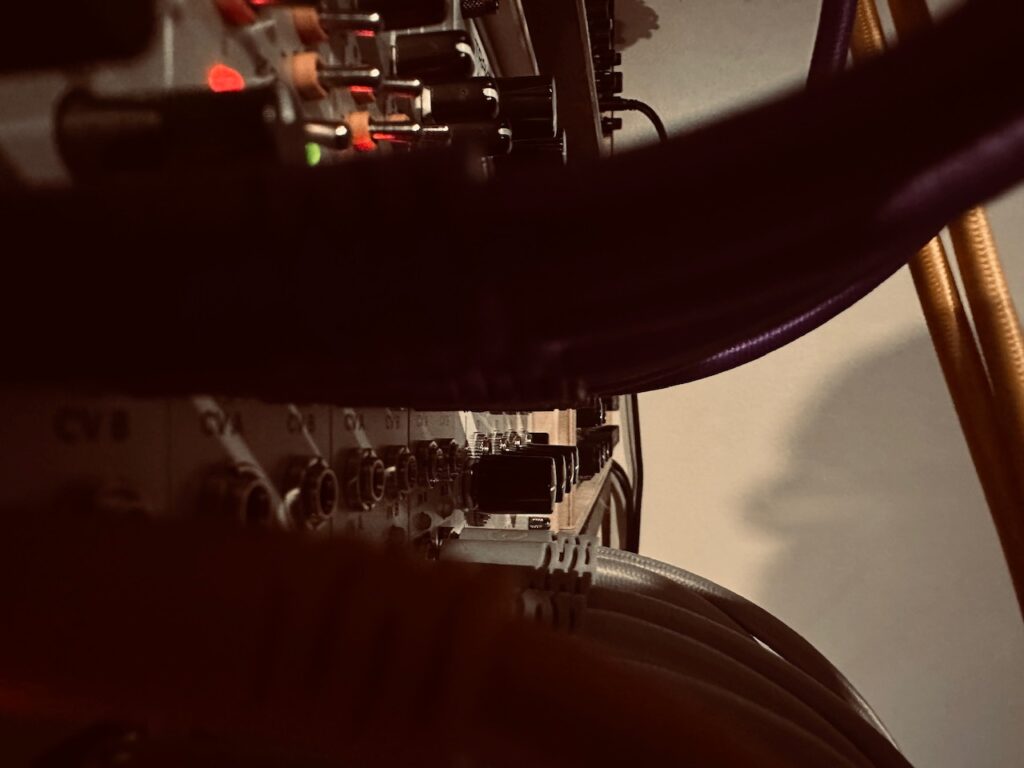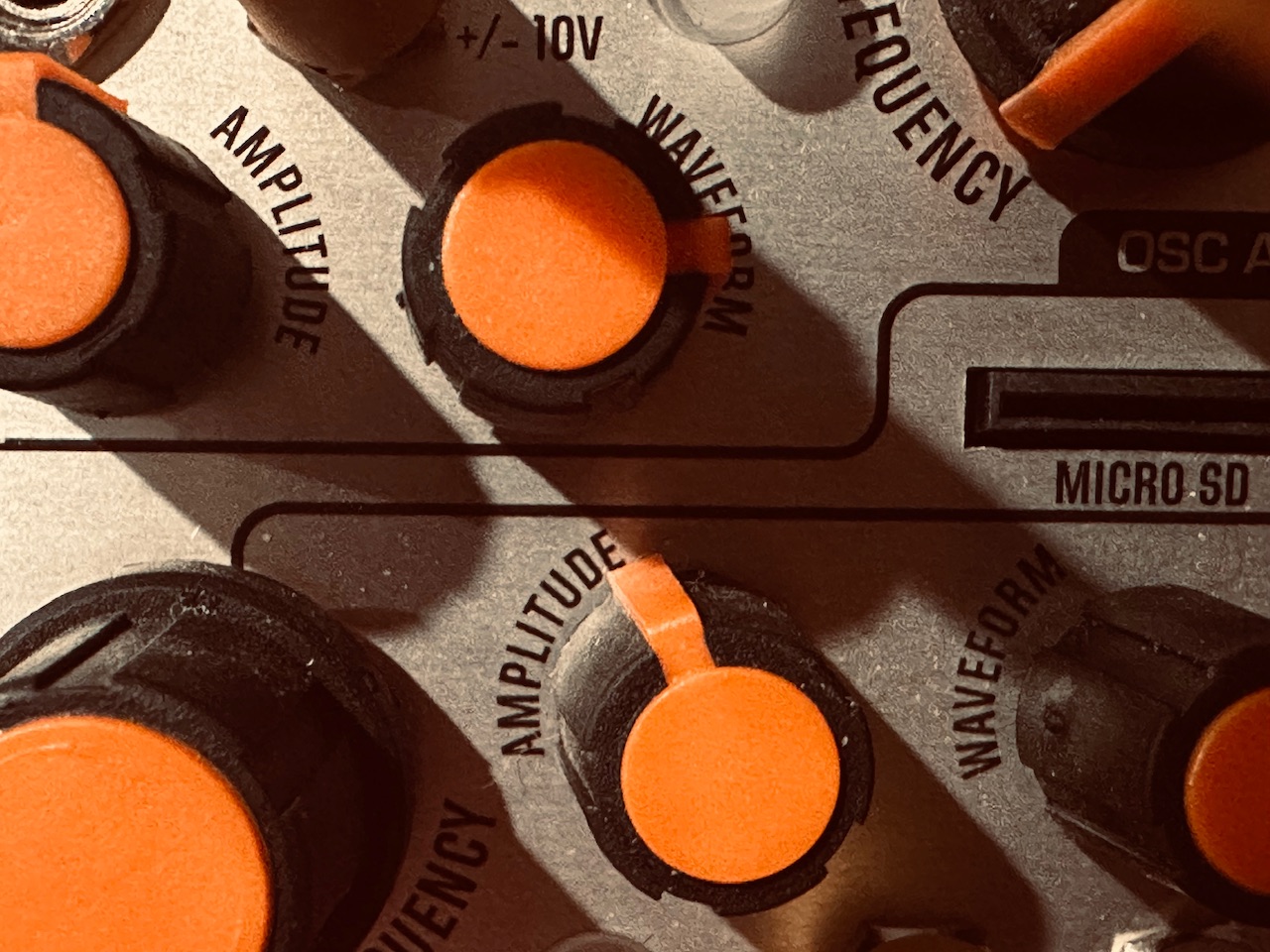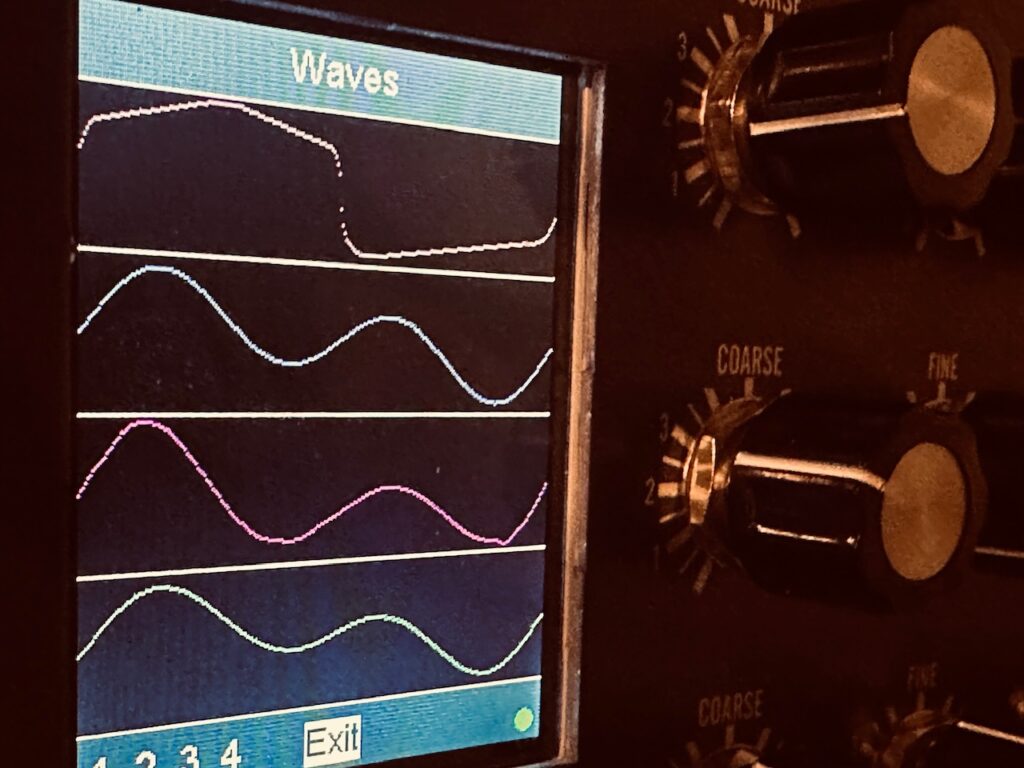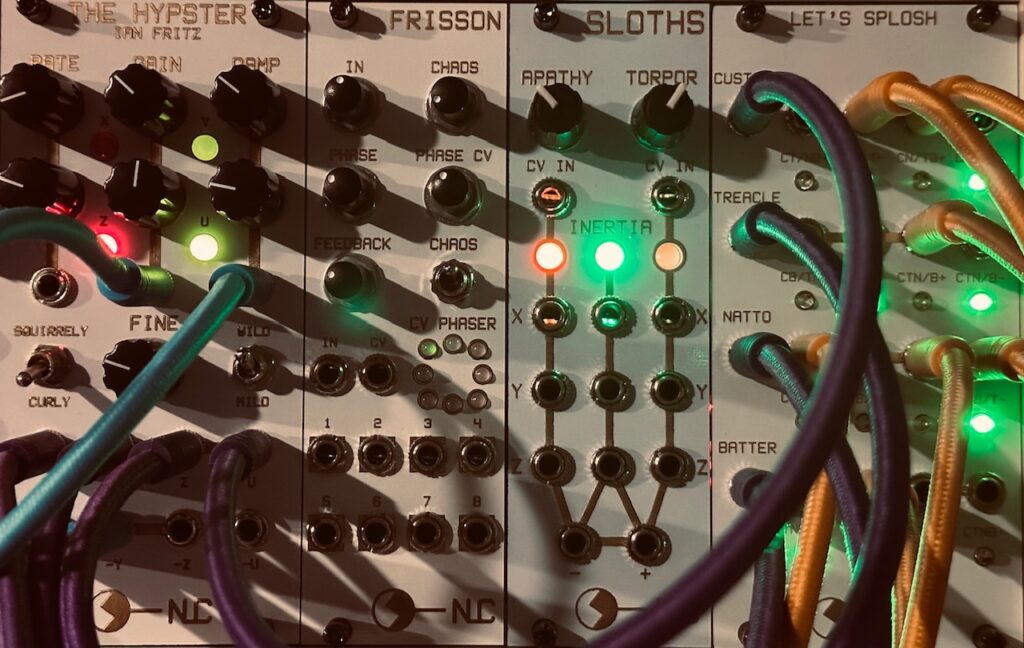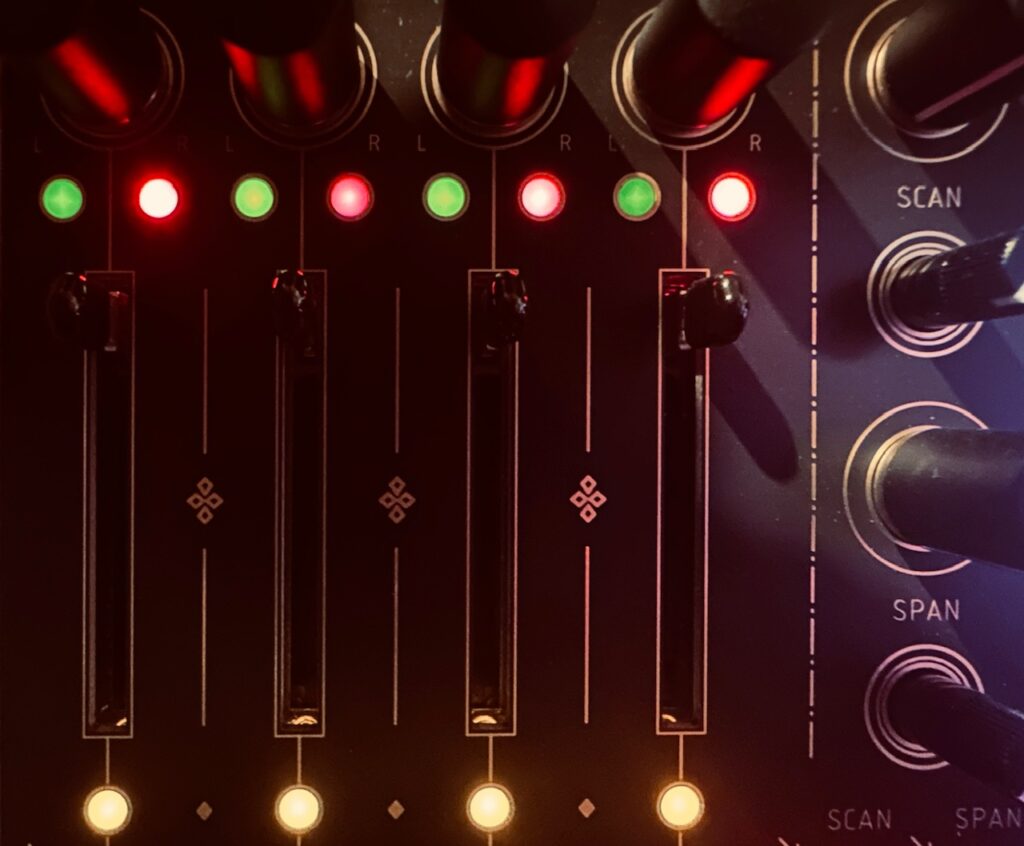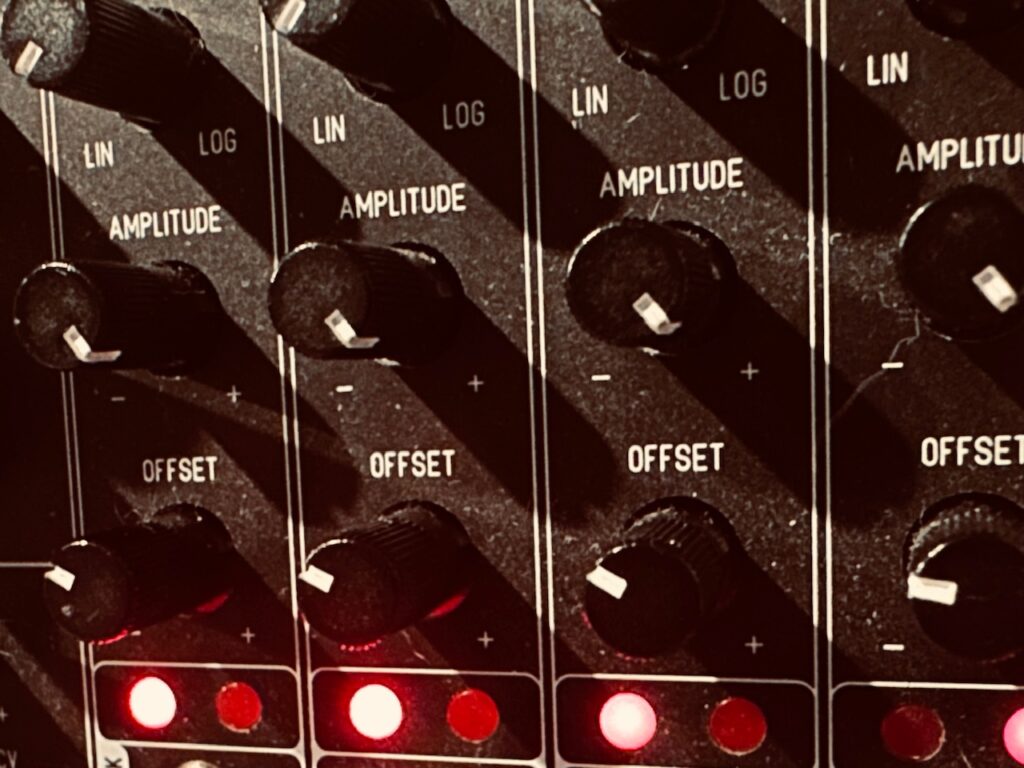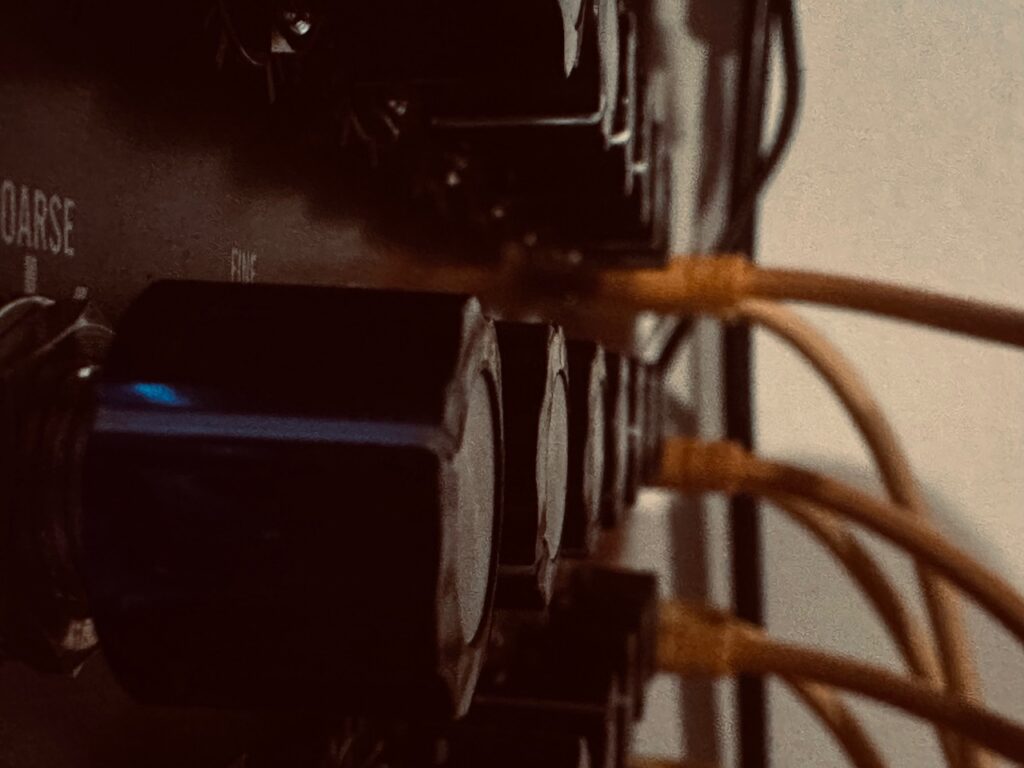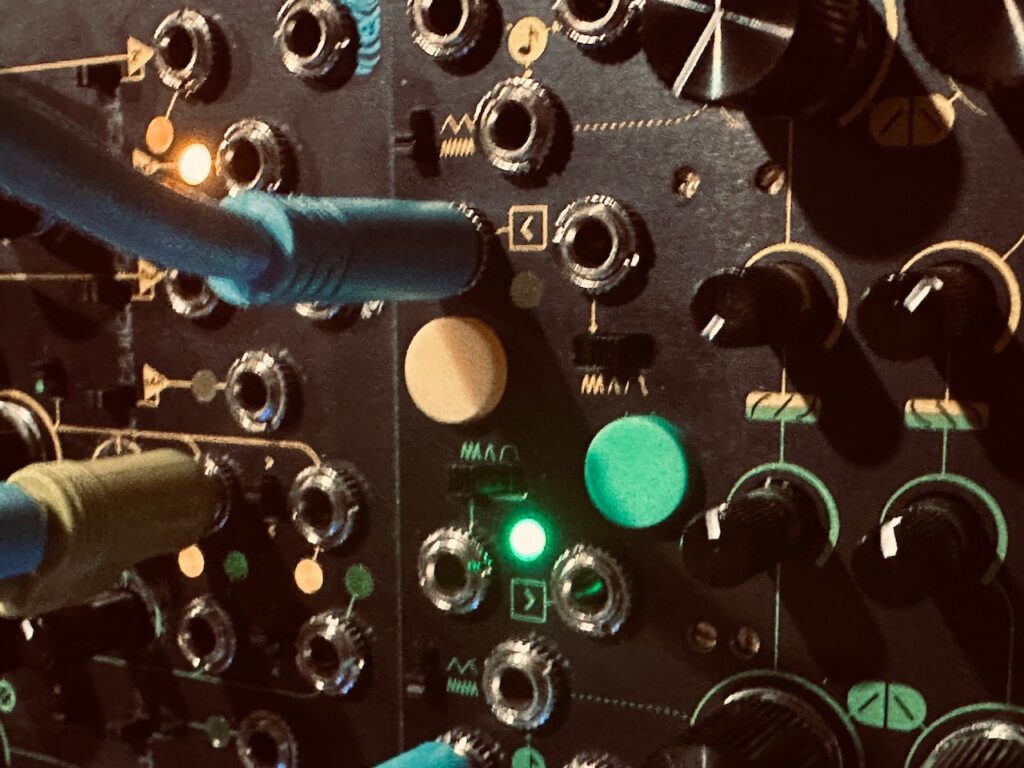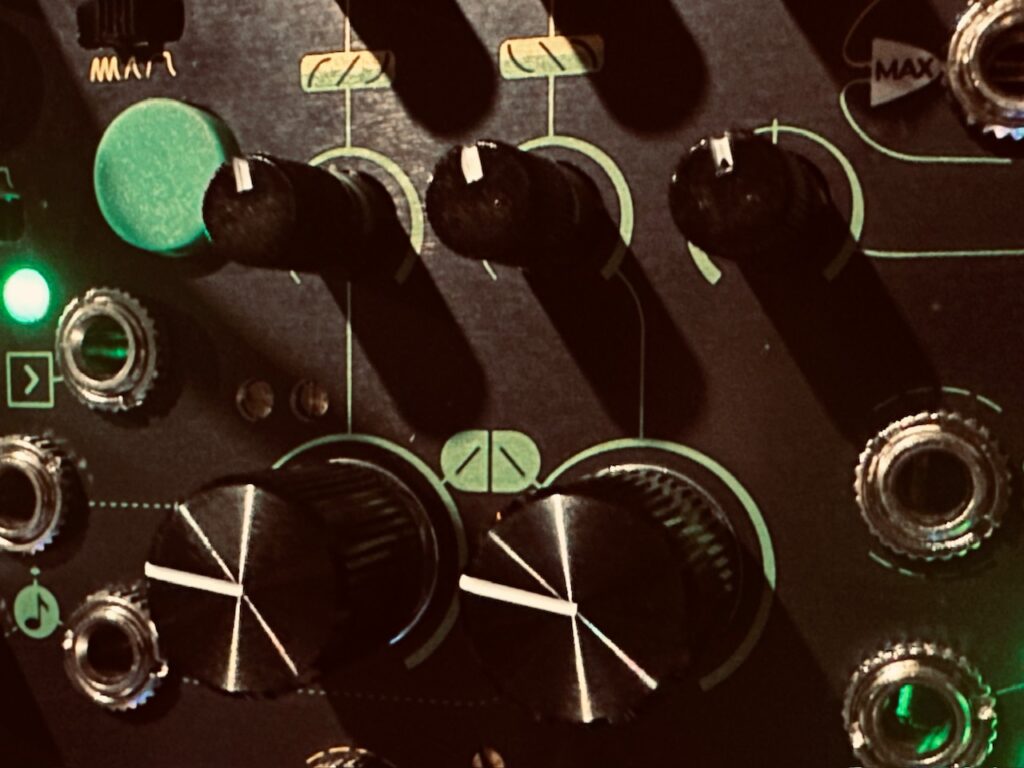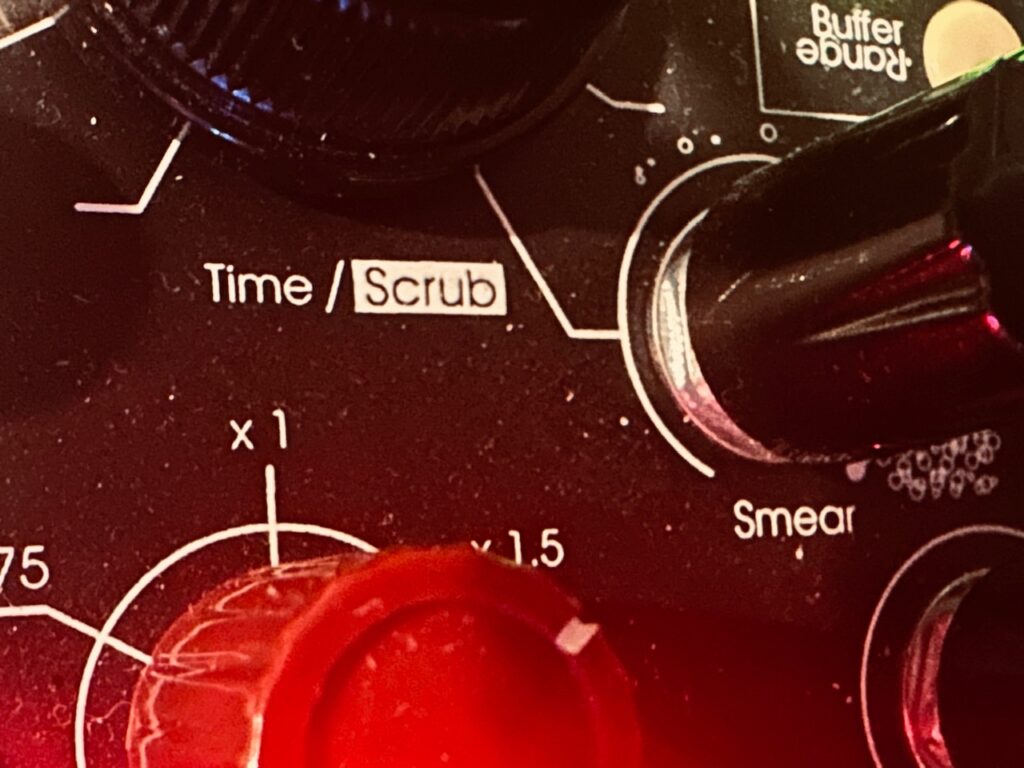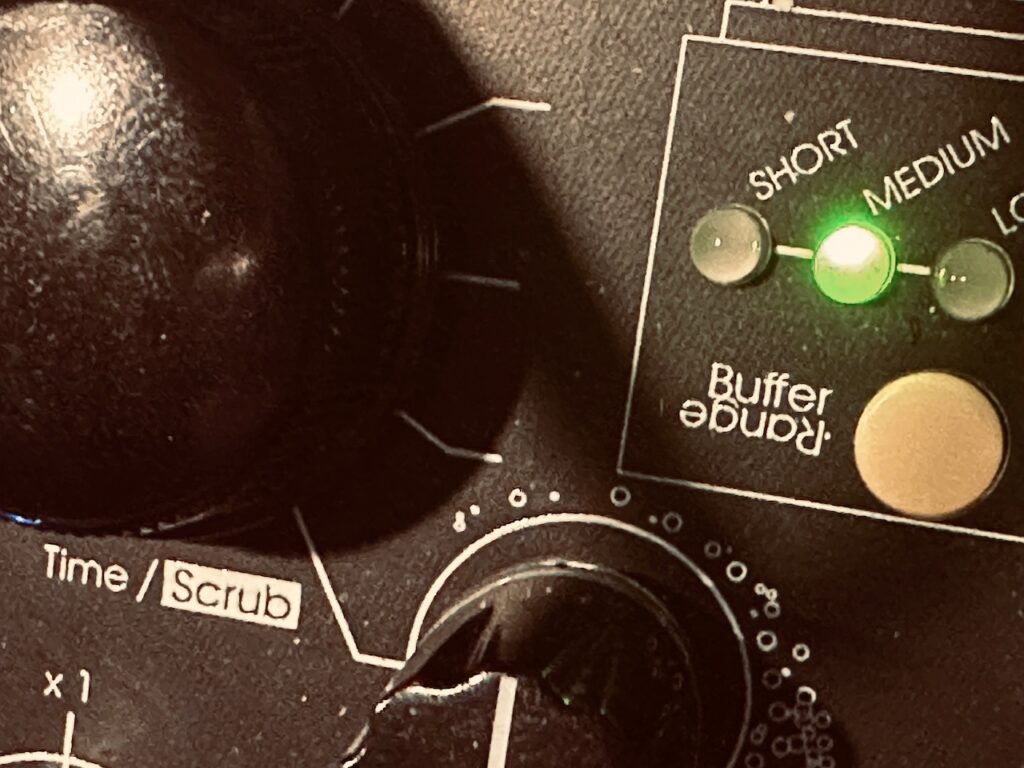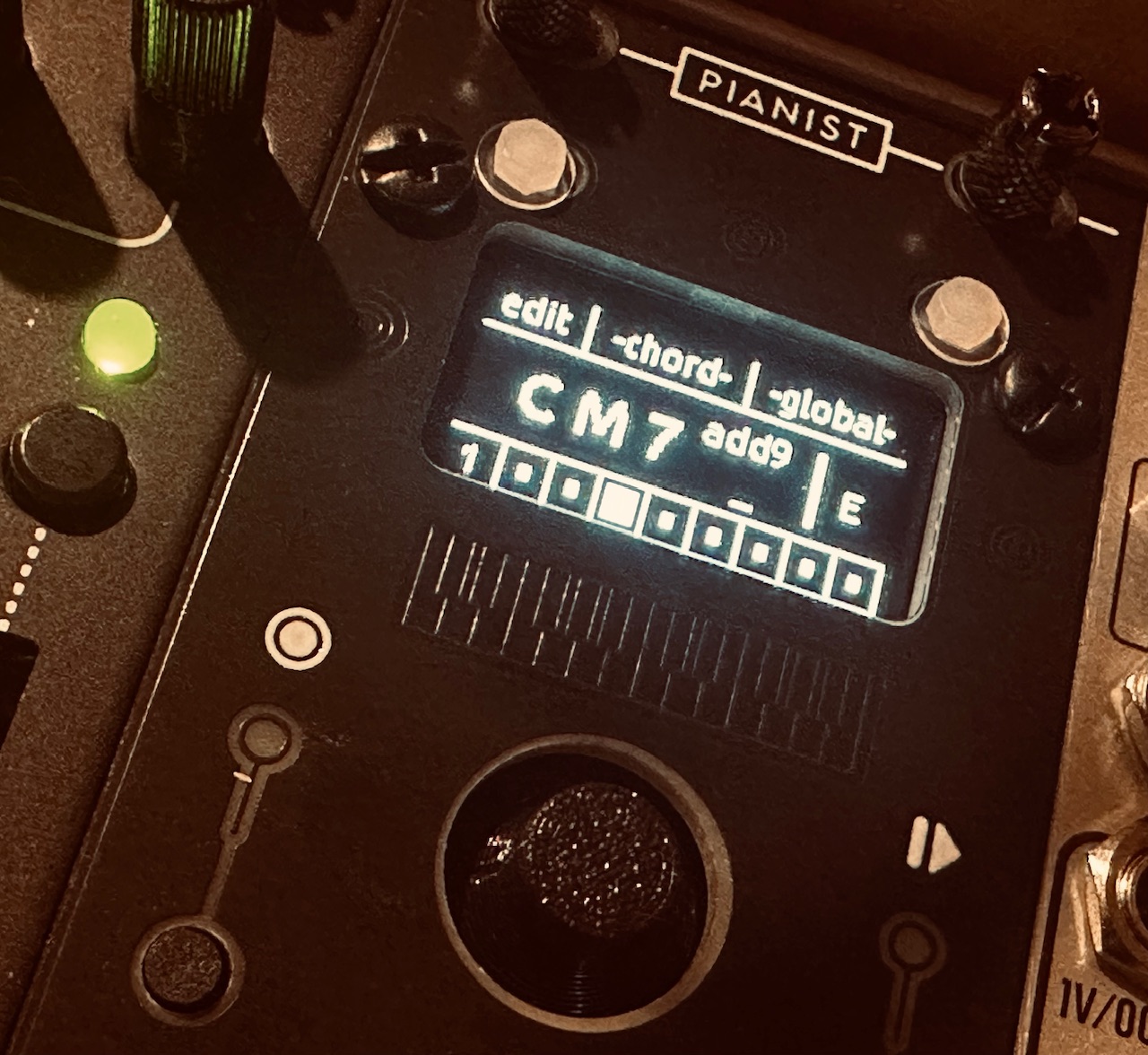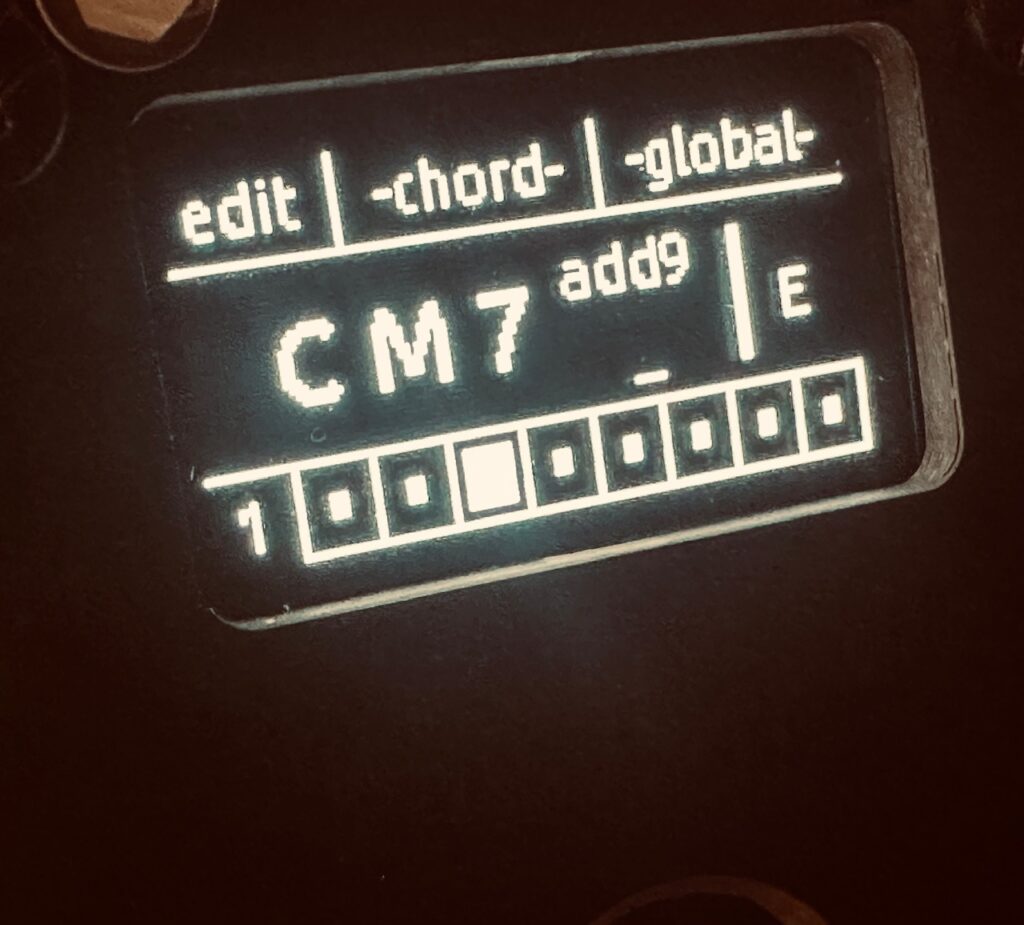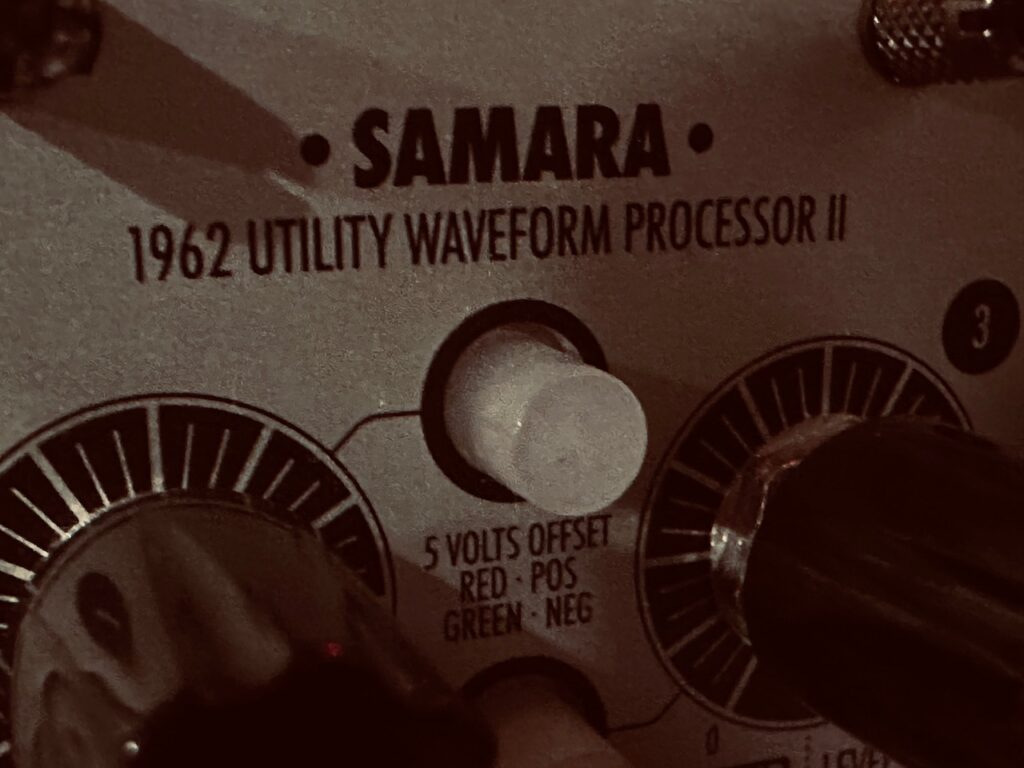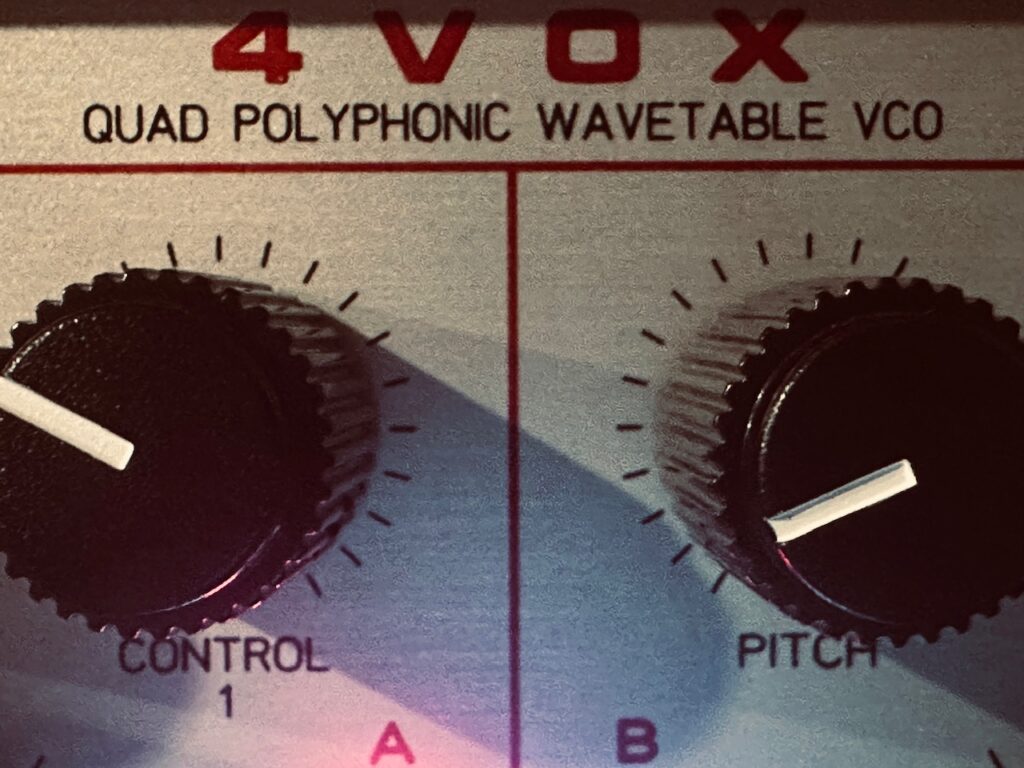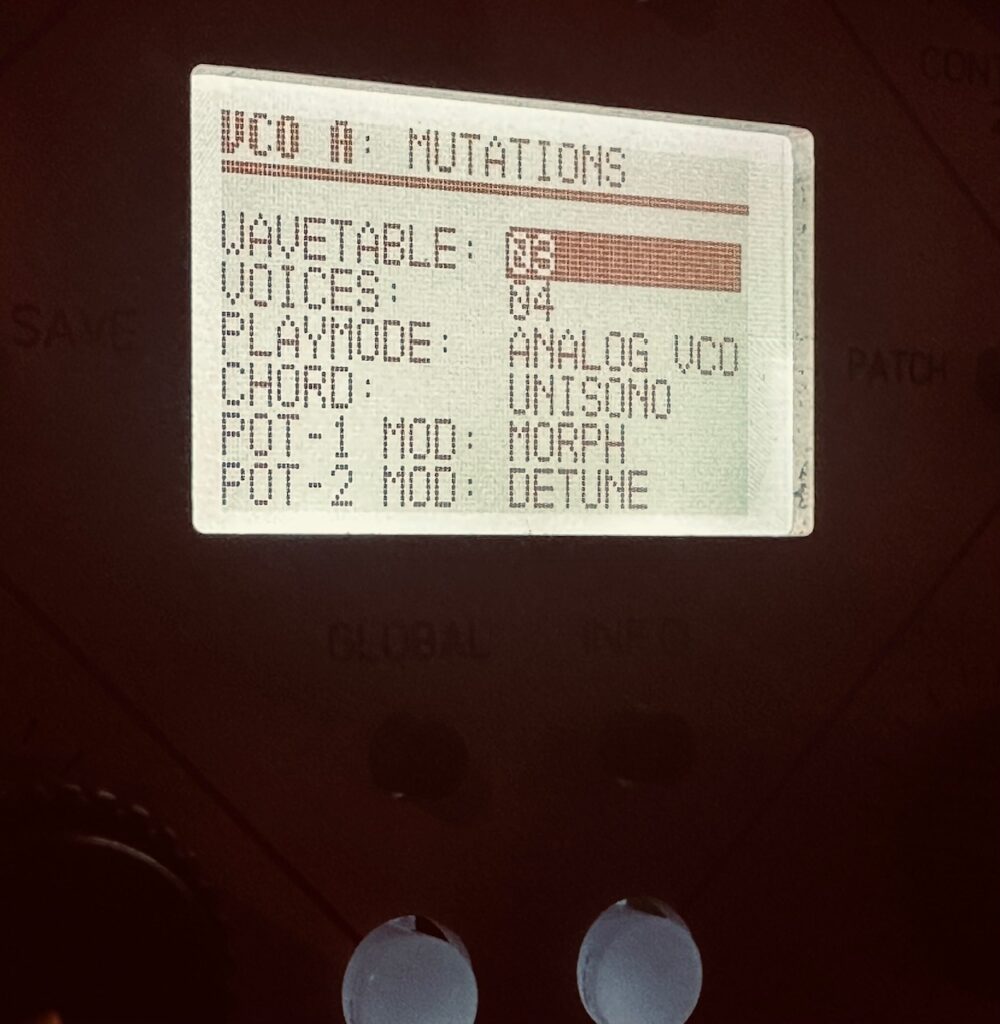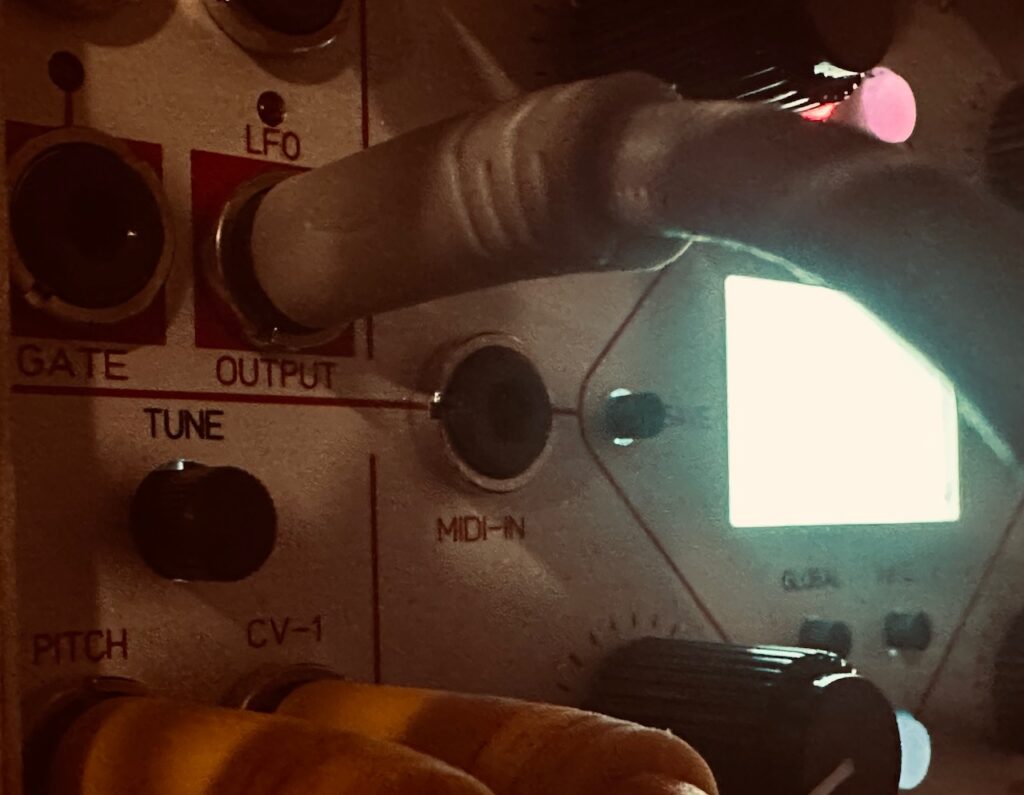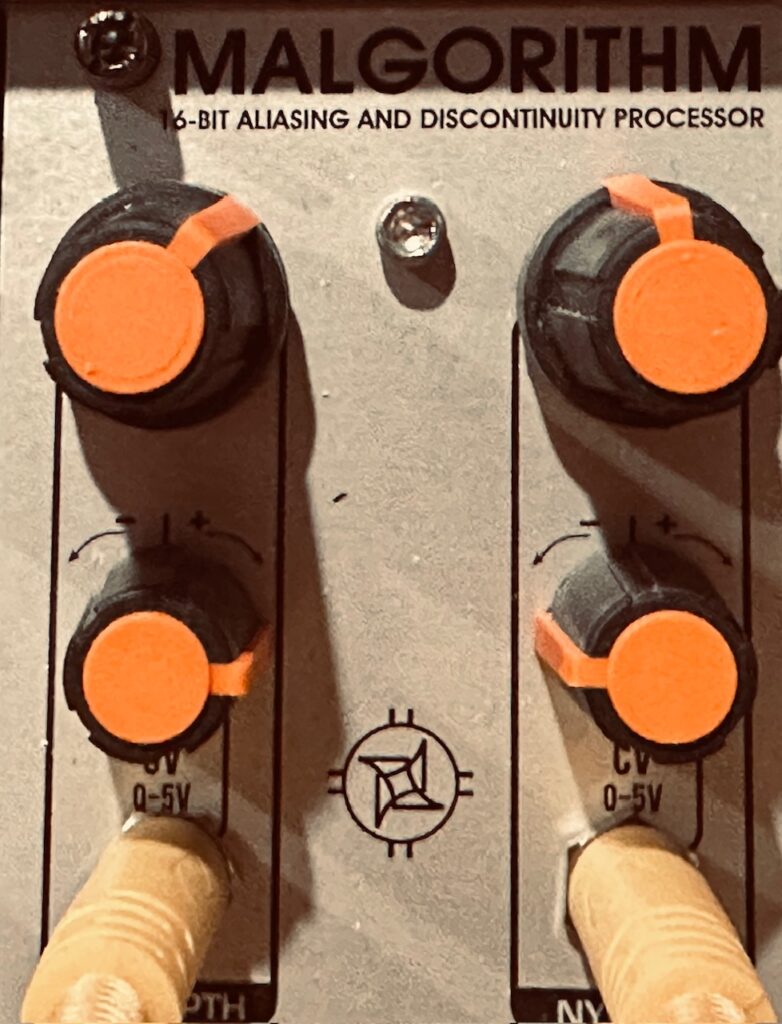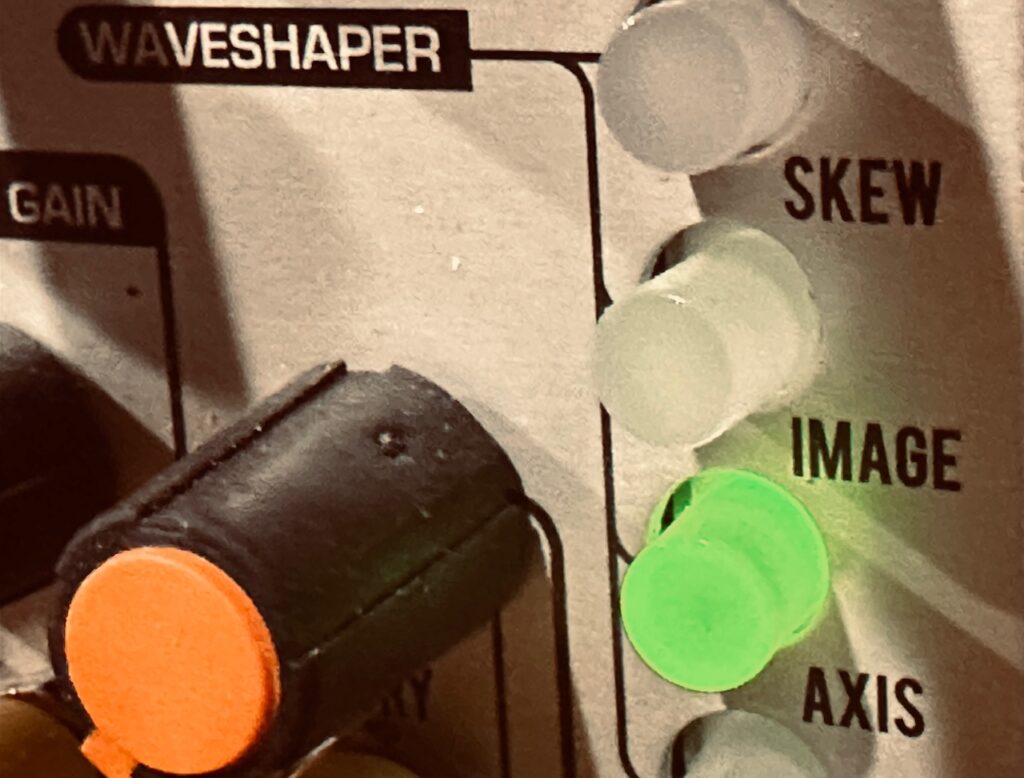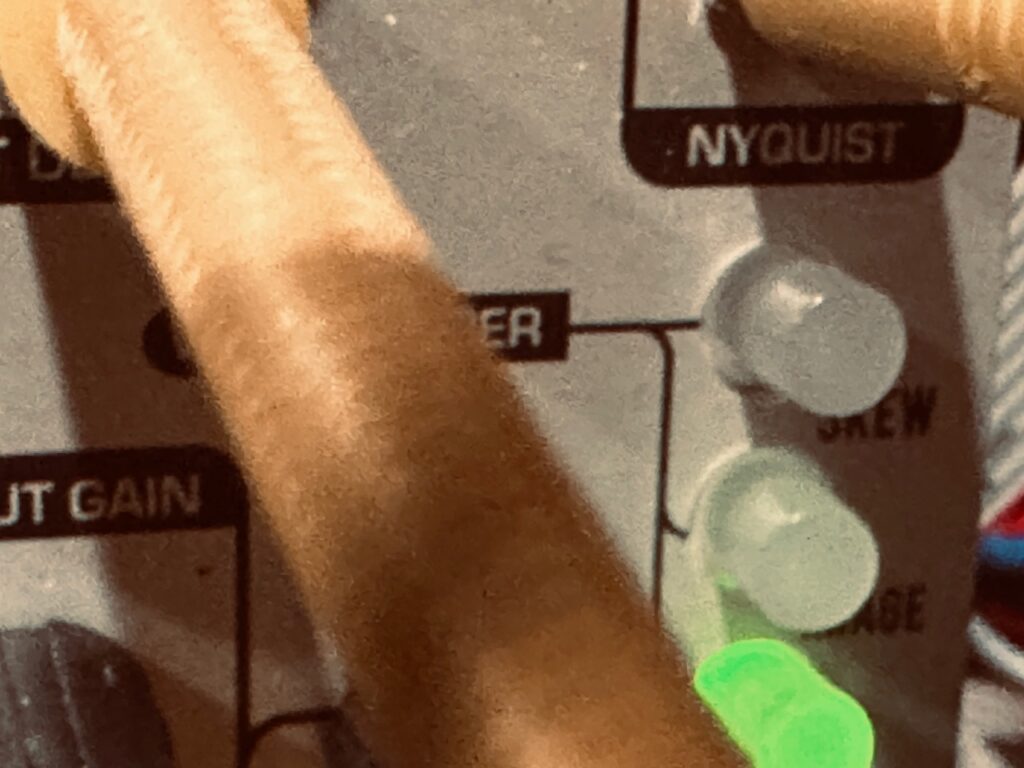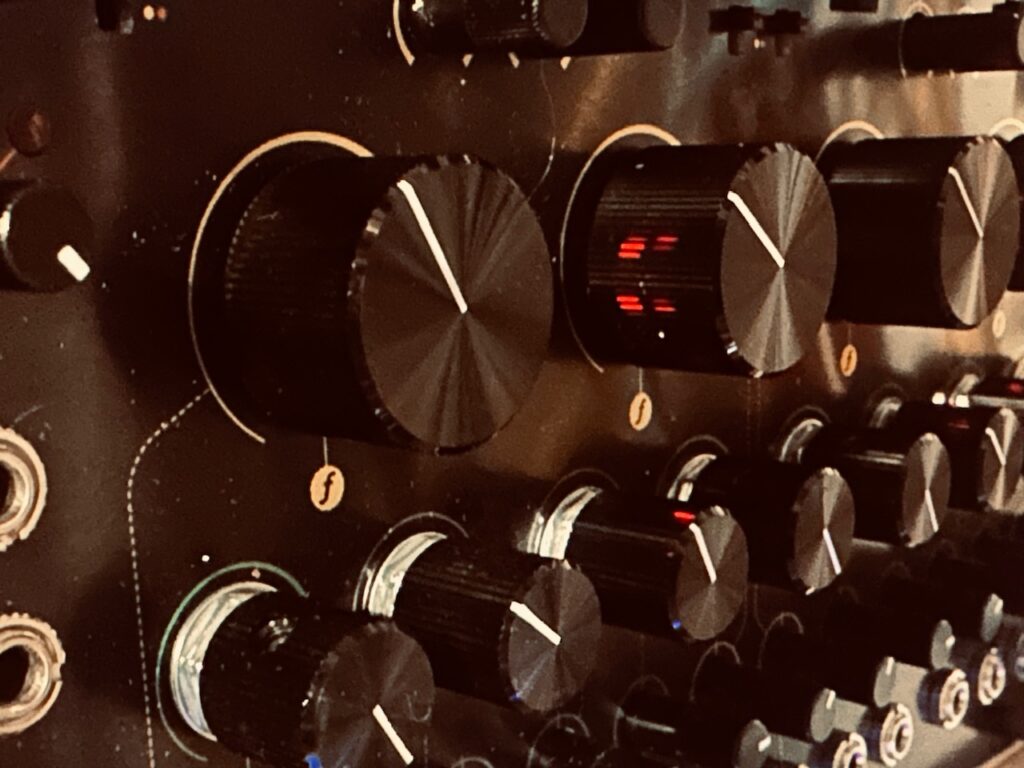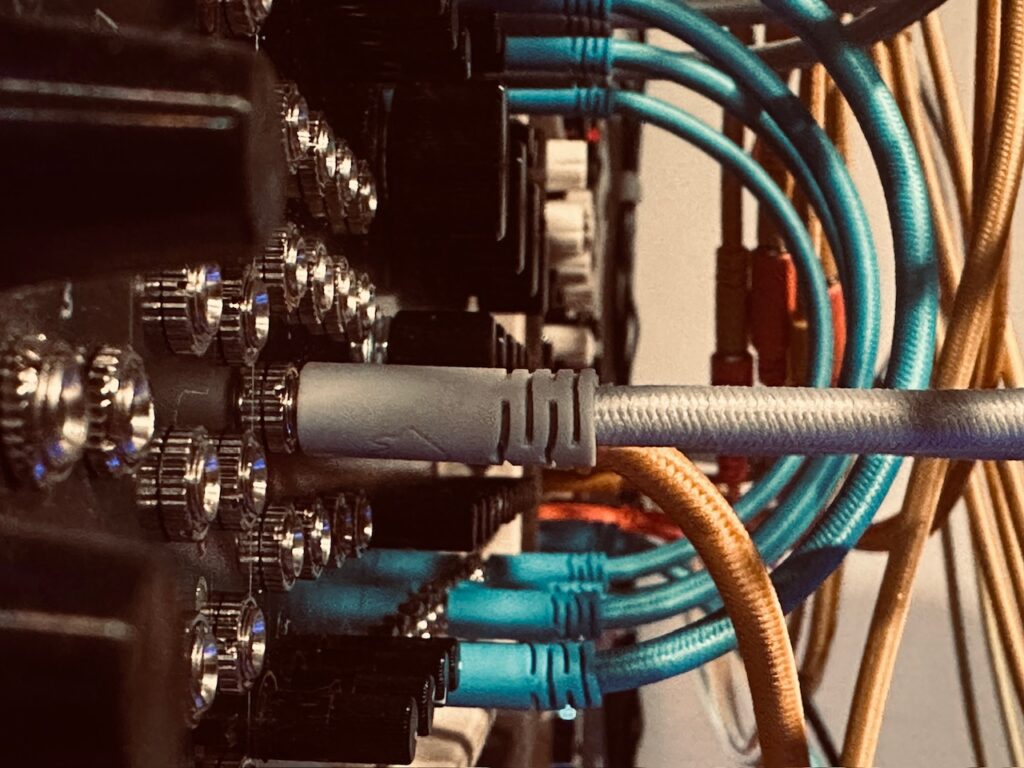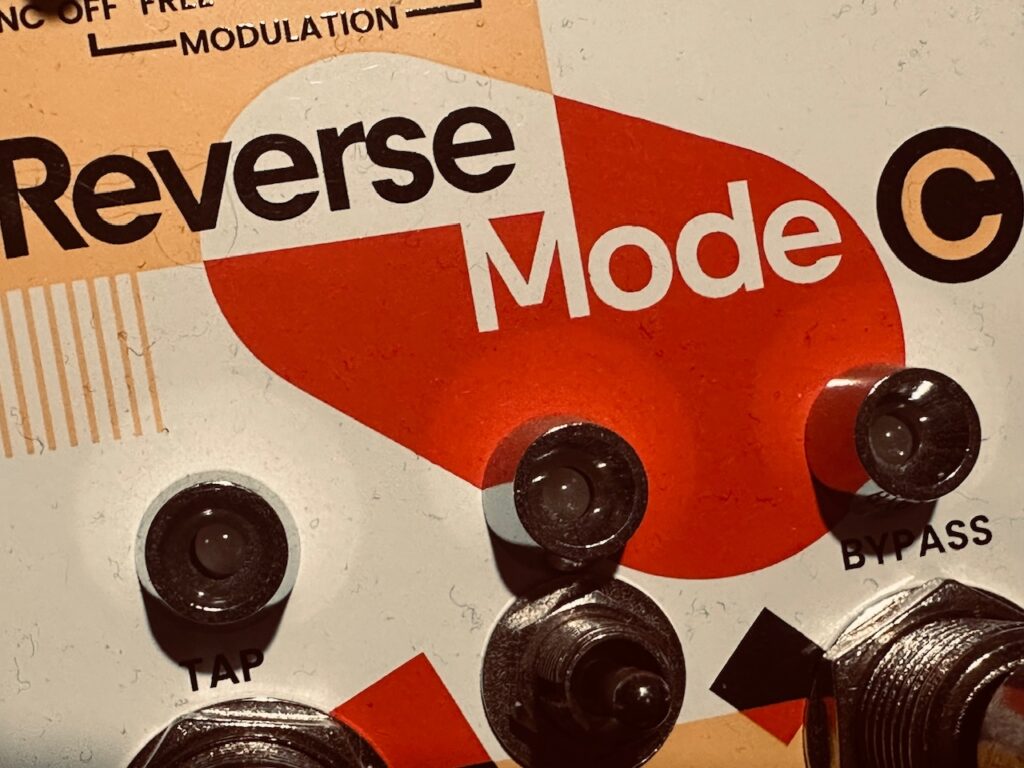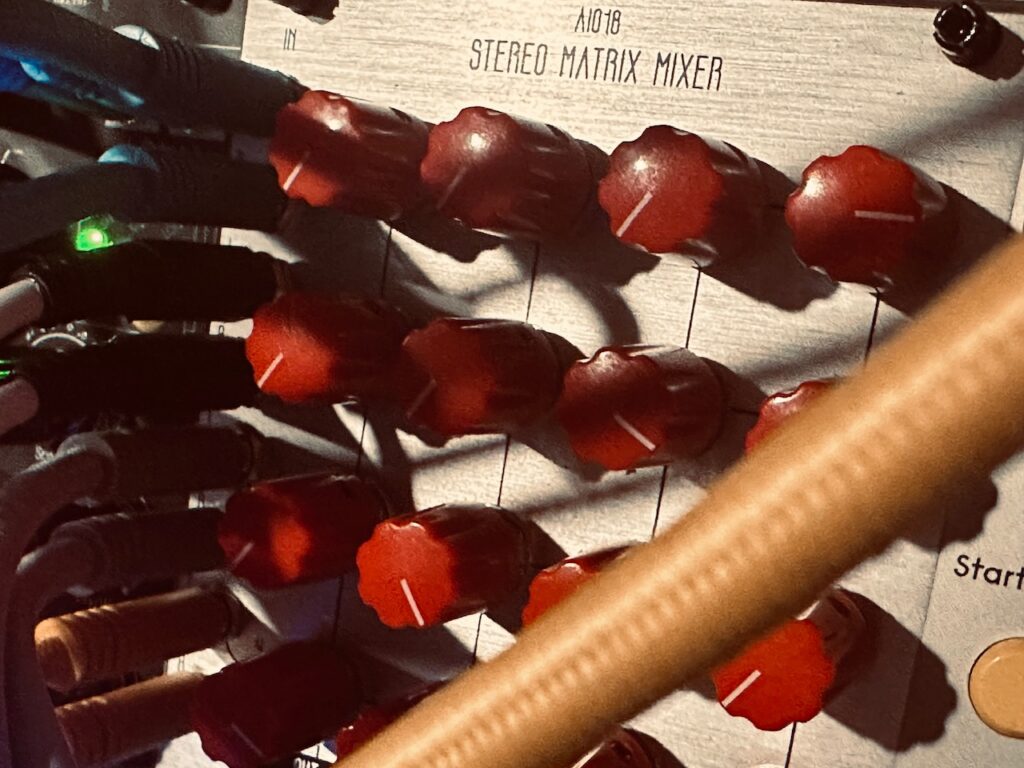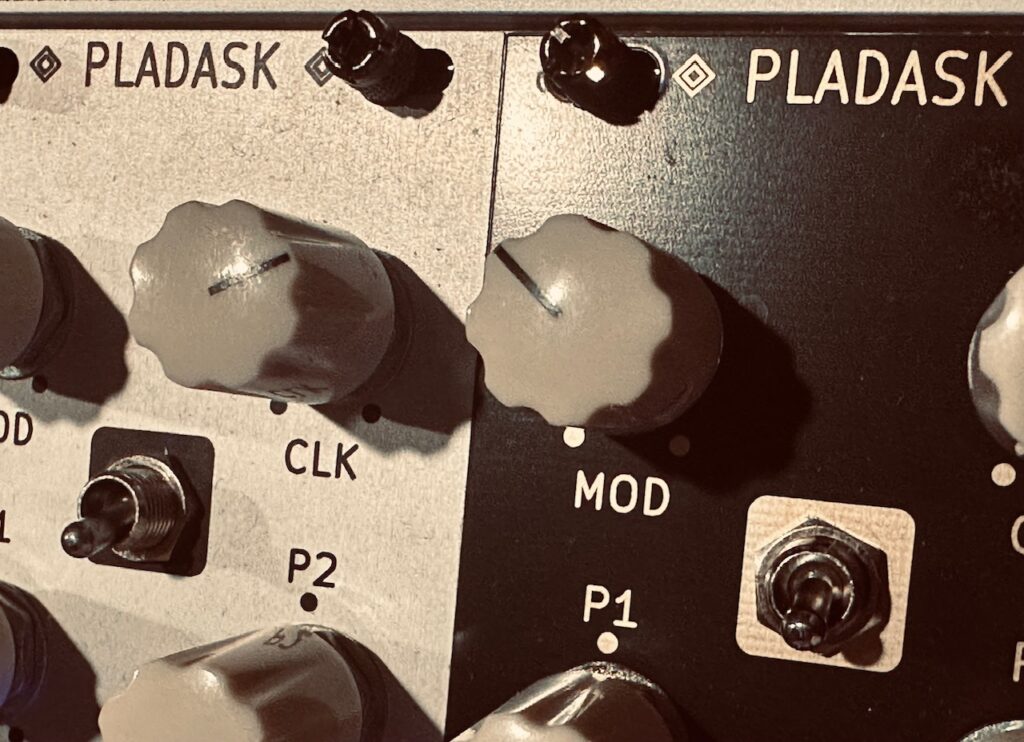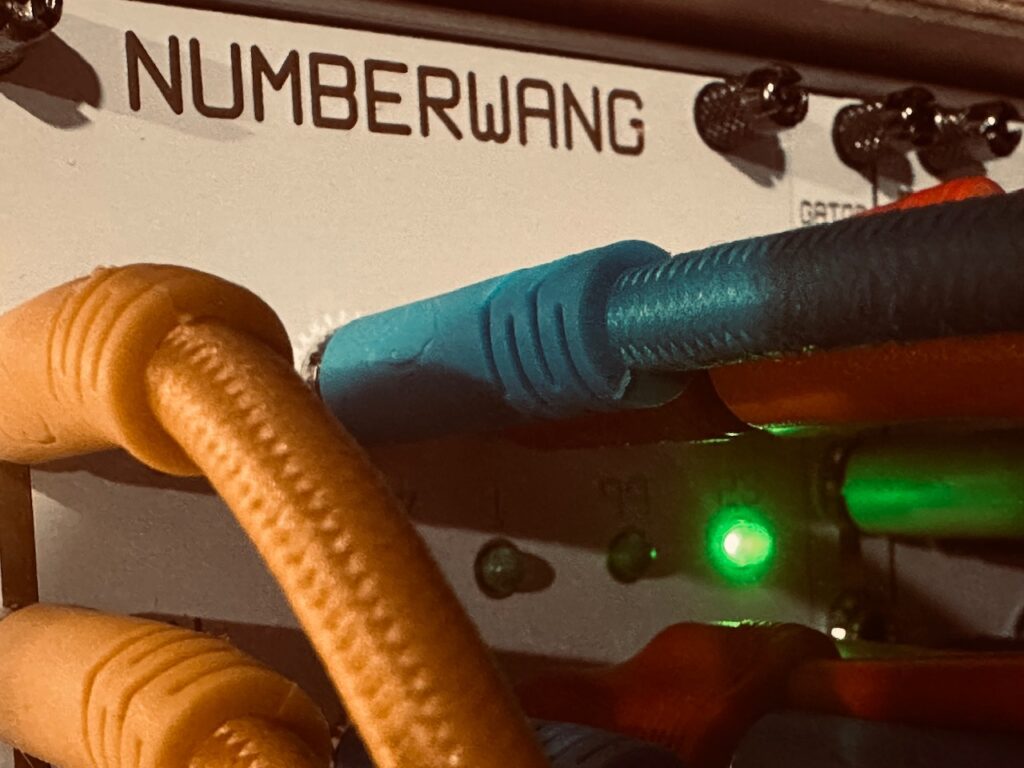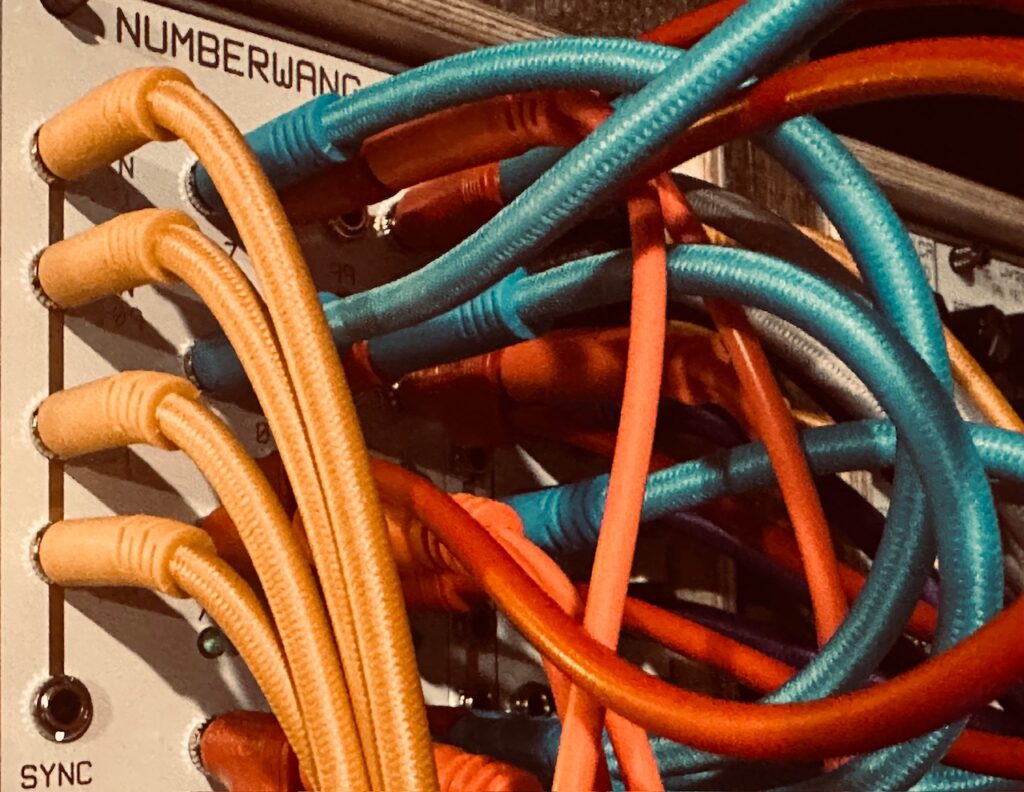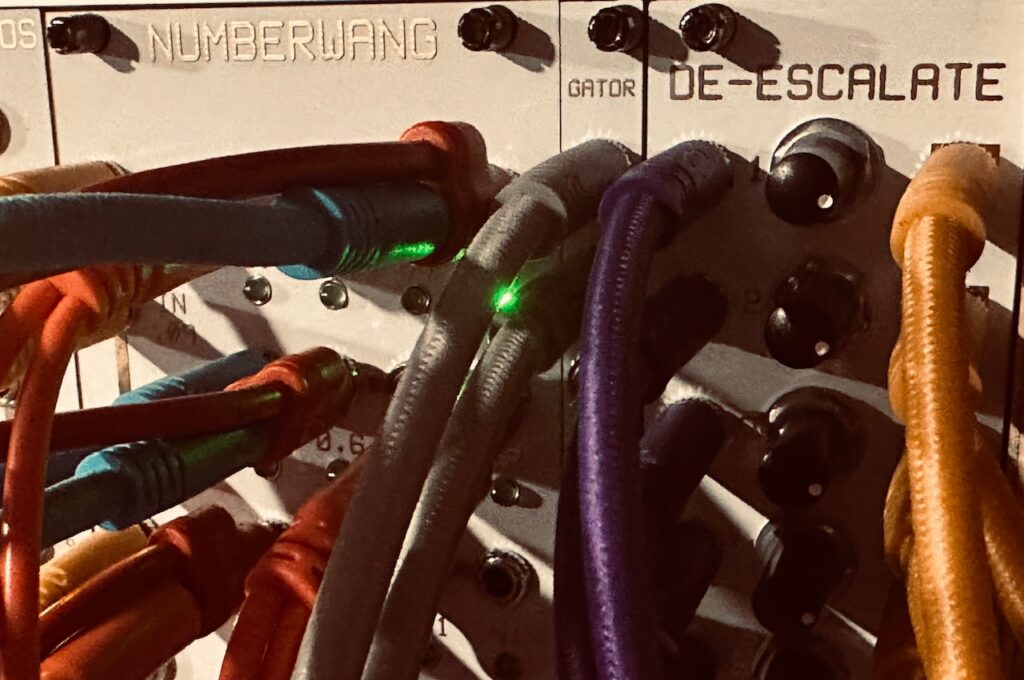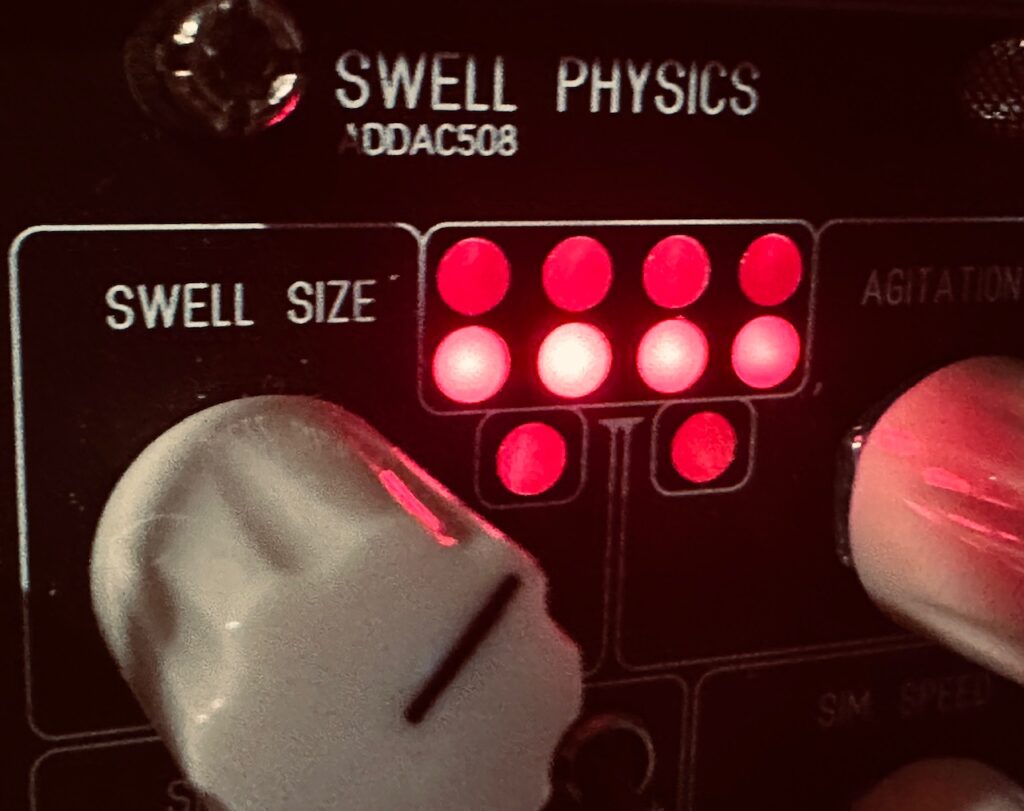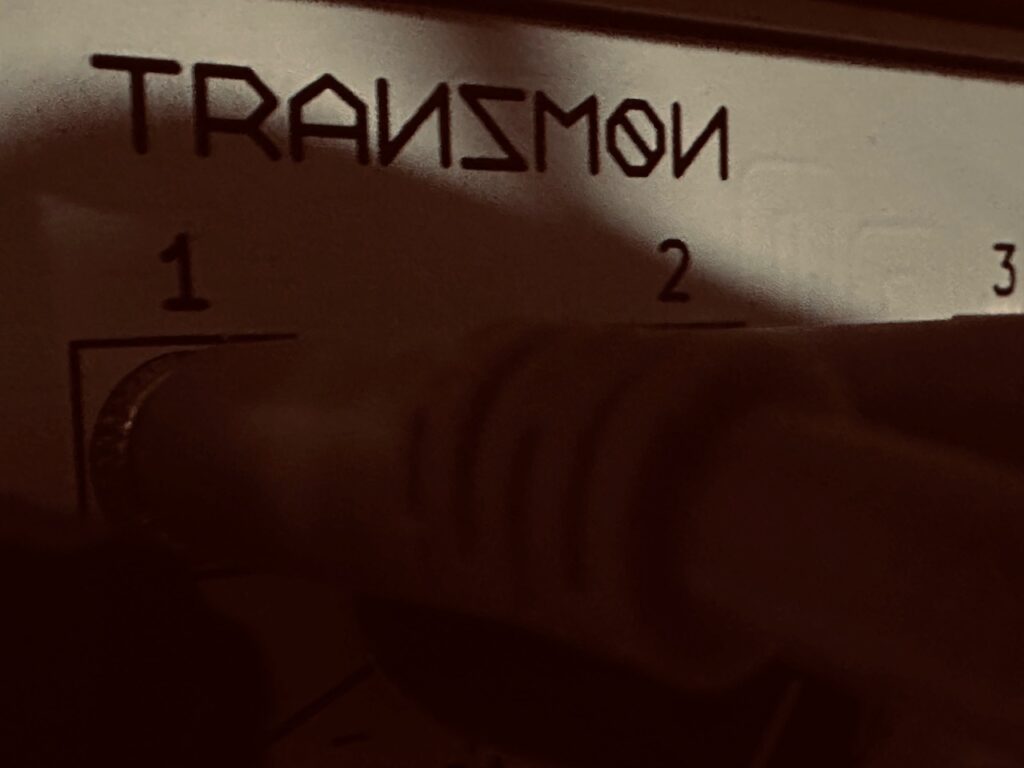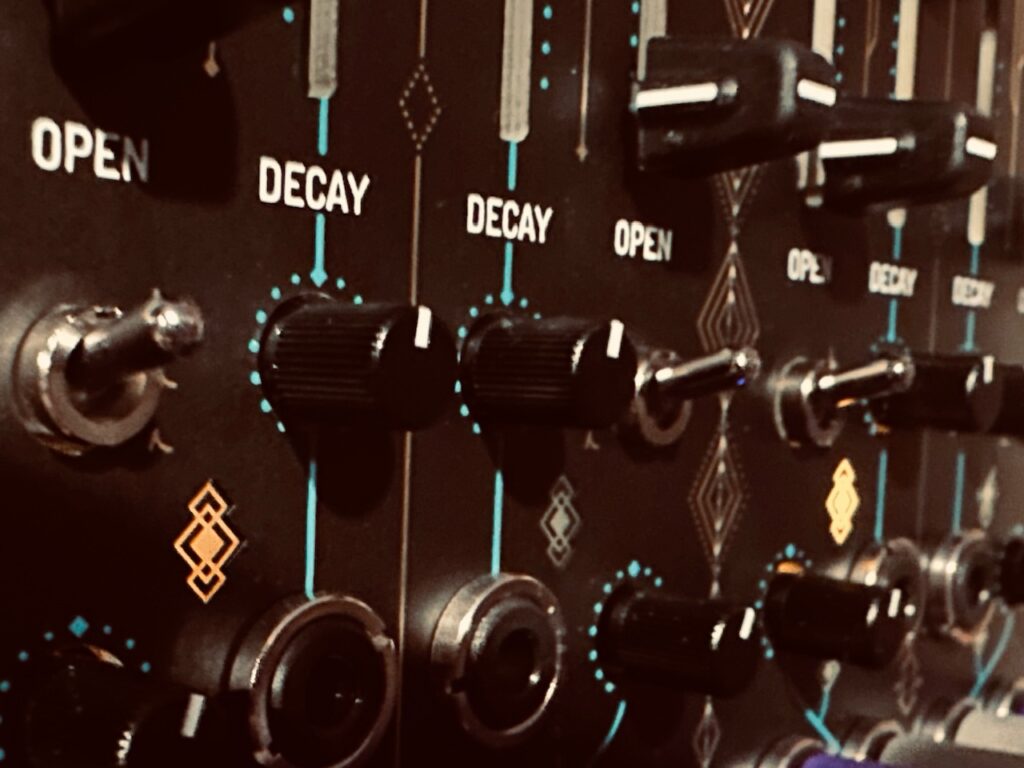Like all good little electronic ambient musicians, I’ve finally picked up a Monome Norns. Any quick look around the web, and you’ll see Norns is a common tool for creating ambient music, used by musicians from around the world. Norns is a small, open source, community driven music computer that runs scripts written in a language called Lua. There are hundreds, if not over a thousand, Norns scripts that perform any number of musical tasks from sequencing, being a sound source, or processing audio. Overall, it’s a very charming piece of kit that is elegant, minimalist, and can sound beautiful. To me, no script represents Norns better than Fall, a beautiful generative sequencer designed to be a soundscape of falling leaves, and synthesizer made of pure relax-ium, written by Ambalek. It’s simple, elegant (especially when paired with a Grid), and creates absolutely beautiful sounds that will lull you to sleep, or send you on a journey in a bed of peace.
The Init settings on Fall’s sound engine are seemingly simple. A chaotic (or random) process guides virtual leaves falling to the ground. As they hit the ground, sound emerges. A 13-bit filtered square wave is brought in with a gentle rise, and fades out with an even slower decay. This note is sent through two separate stereo delays, the first with a one second delay time, and the second delay with a ten second delay time, all followed up by long reverb. Although I can send midi from Norns to the synth, I wanted to try my hand at patching my own Fall algorithm from scratch. ”This should be pretty simple”, I thought as I started to patch. A few square waves into a filter, followed up by two delays and reverb. “That should be easy enough.”
My first consideration was how I might create a similar cadence to Fall using the tools I have in the case. This all important process determines when notes are played, and I was hopeful to get a reasonable approximation of a representative sample of how often notes are fired in Fall. Fall assigns a note value to each leaf as it’s generated, which can change if the key or scale is changed before a leaf hits the ground. That’s not possible in Eurorack. There are no predetermined leaves here. The only part of that simulation we have in this patch is once these proverbial leaves hit the ground and are actuated by the gate triggering an envelope. Since it’s not clear to me what sort of process generates the falling leaves in Fall, I decided to use chaos. A leaf falling is a chaotic phenomenon created by any number of nonlinear conditions from wind speed and direction, to humidity and leaf density. In that light, I decided to use Swell Physics, a CV generator based on ocean waves, another chaotic process, and ran the four wave outputs through the Nonlinearcircuits Numberwang in order to create nonlinear, sporadic gates. Increasing the simulation speed of Swell Physics would render “leaves” hitting the ground more often.
A second copy of the four Swell Physics outputs were sent to the Vostok Instruments Asset, a very handy six channel attenuator and offset generator, in order to tune them into a range that was good for pitch changes as to not have pitches too high or too low. Though I was able to accomplish a reasonable range, I wasn’t entirely happy. There are too many notes in a very low register, and they repeat too often. I’ll need to really sit down and further tune this set of CV outputs to get it right.
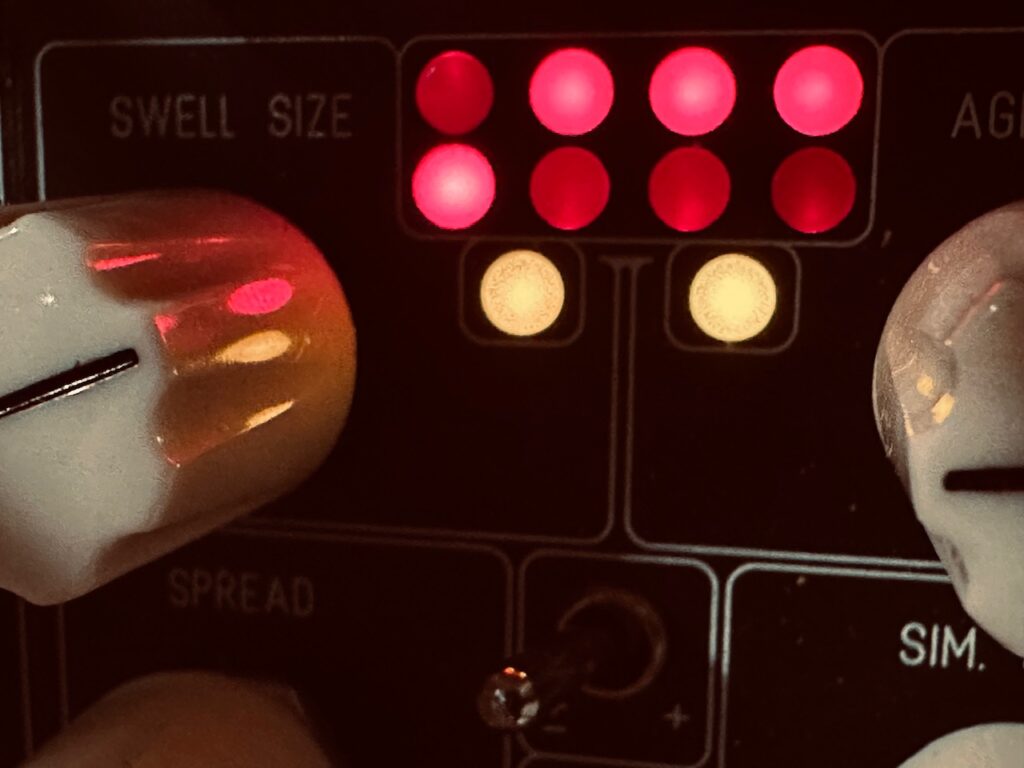
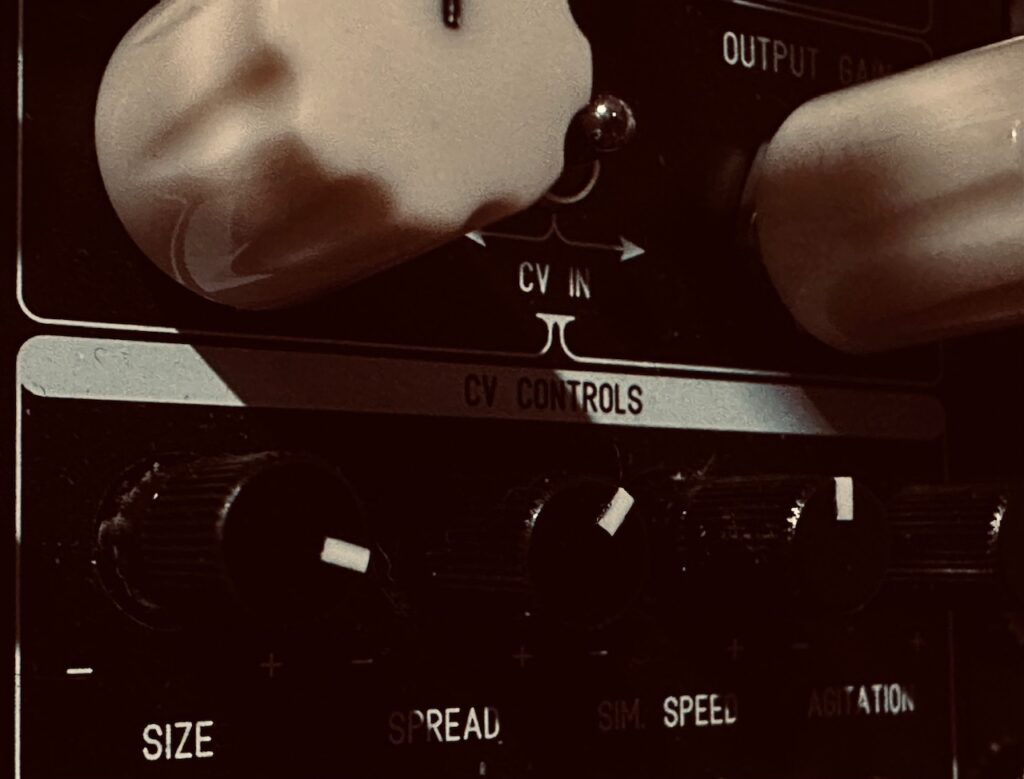
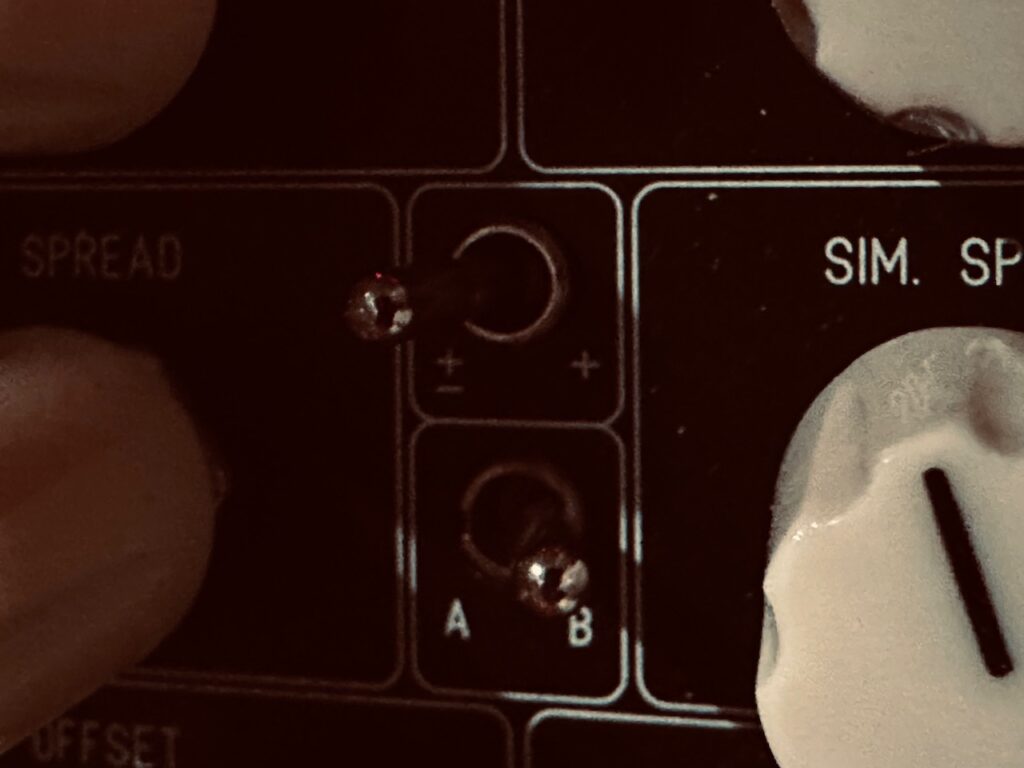
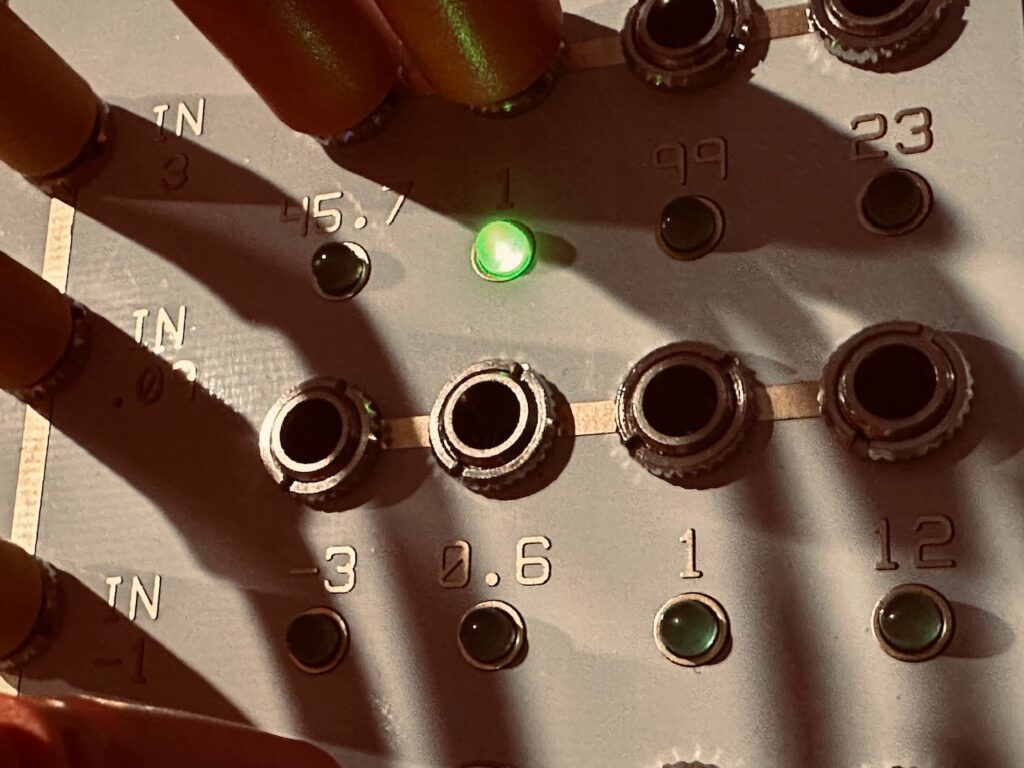
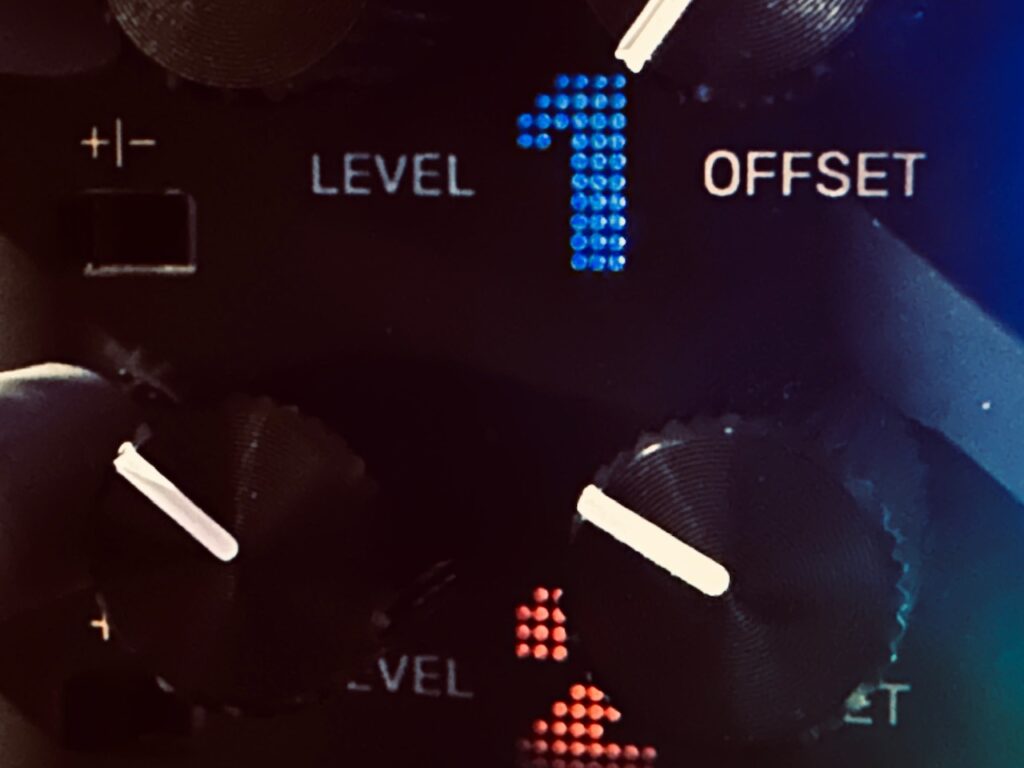
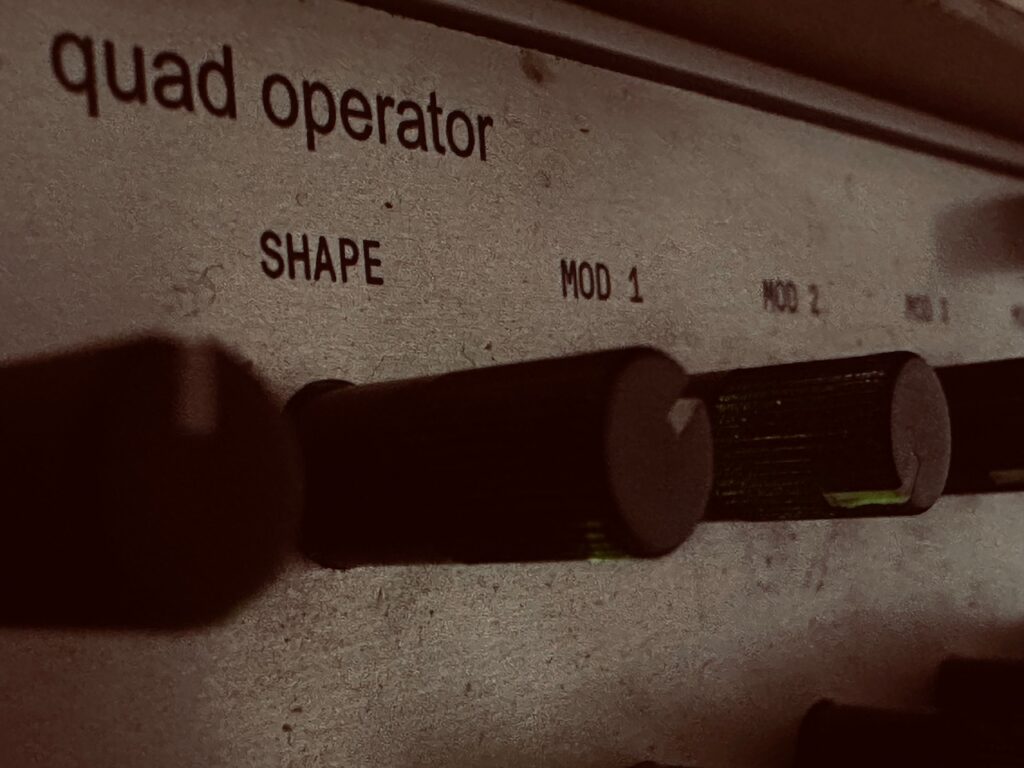
Though I was pretty happy with the cadence of triggers fairly quickly (I’ve done this sub-patch many times), something wasn’t right. Whether from a bad case of mis-remembering or simply being wrong, I struggled with the envelope that shapes each note, which created all sorts of downstream issues. The first delay was utterly lost, which also lengthened the note in a bad way, which also affected the second delay. It also created way too much dissonance with more newly created notes in this generative sequence. I couldn’t figure out the problem until after several listens. When I went to Norns to check the Init settings, I discovered I was wildly off on the envelope times. I somehow remembered a three second rise with a nine second fall, or thereabouts, while in reality the rise is around one second, with an approximately three second fall. About three times shorter than the settings I used. I’ve no doubt that shortening the envelope will prove to be fruitful in many ways. I used Falistri for all four envelopes, which served fine, but I’ll need to shorten those envelopes in order to get closer to Fall. Falistri has become my “go-to” function generator. Whether for modulation or actuating sounds, I use Falistri in almost every patch. I use Falistri so much that I’m in the process of expanding my Frap Tools case to include a total of four Falistris. The module is fantastic and flexible, and if I could keep only one function generator it would be Falistri.
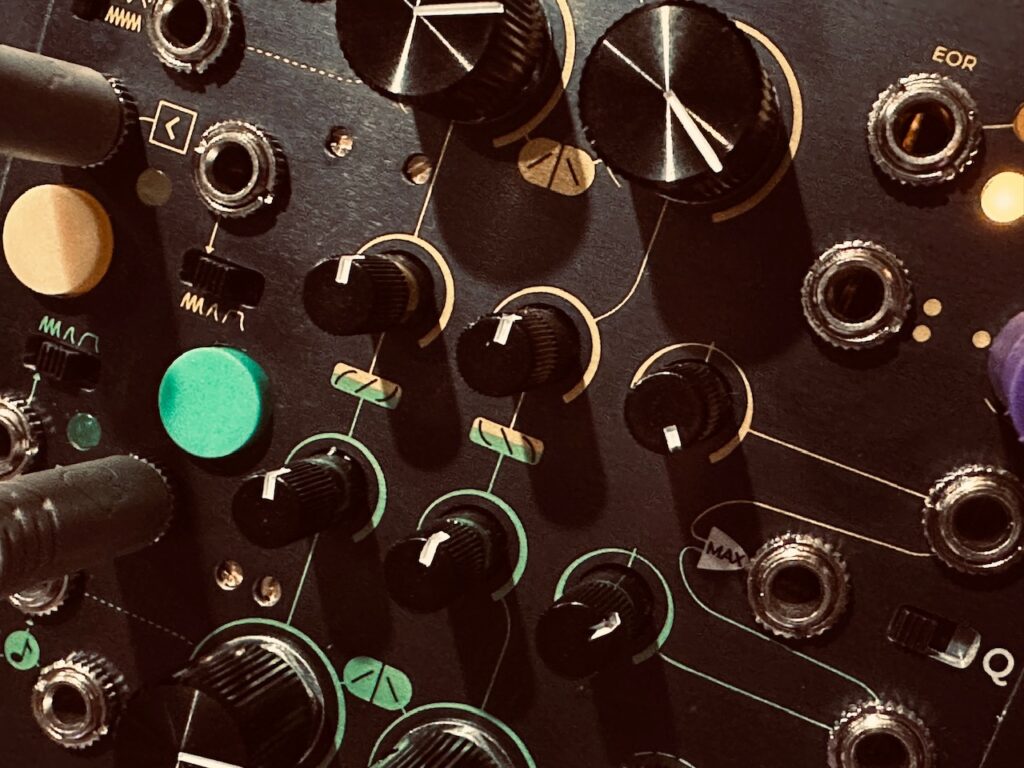
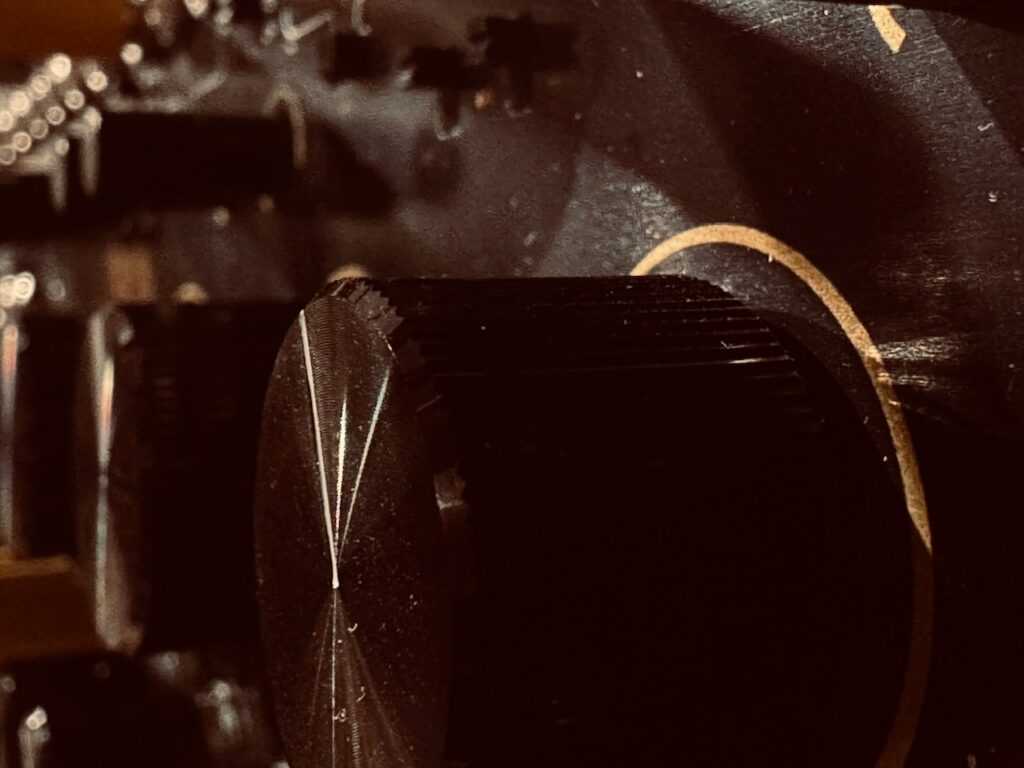
I used the Humble Audio Quad Operator bank as my four square wave oscillators. Operators one and three were tuned in unison, with operators two and four tuned one octave higher. There’s no good reason why I chose to stagger high and low pitched oscillators, but it doesn’t make much difference in the long run. I tuned each oscillator to each other, but none are tuned to a specific pitch, a mistake I’ll remedy when I tweak the patch. The audio from each channel went to the Frap Tools CUNSA for some low pass filtering, and was enveloped by Falistri in CUNSA’s VCAs.
The delays used were the Venus Instruments Veno-Echo for the short delay and the Vongon Polyphrase for the long delay. I’ve spilled much proverbial ink writing about Veno-Echo. It’s a seriously wonderful delay with a feature set that’s tough to beat. I’ve used it in a goodly chunk of my patches since getting it. But because the envelope of the note was so long it’s barely audible despite being turned up much higher in the mix than the Init setting calls for. The long delay is also “weird” because it too followed too closely to the note played. It needed more space to be effective in the way it is in Fall. I chose the Polyphrase because of its very long delay times. Many delays can do one to three second delays, but finding one that can do full ten second delays without serious degradation is tough. The Polyphrase records up to 22 seconds in its continuous buffer, so very long delays with high fidelity are possible. Degradation in repeats can be lovely, as I was reminded of multiple times during Jamuary while using the Bizarre Jezabel Quarté Mk2, but Fall calls for a more clear set of repeats, not disintegrating fragments of what was once there.

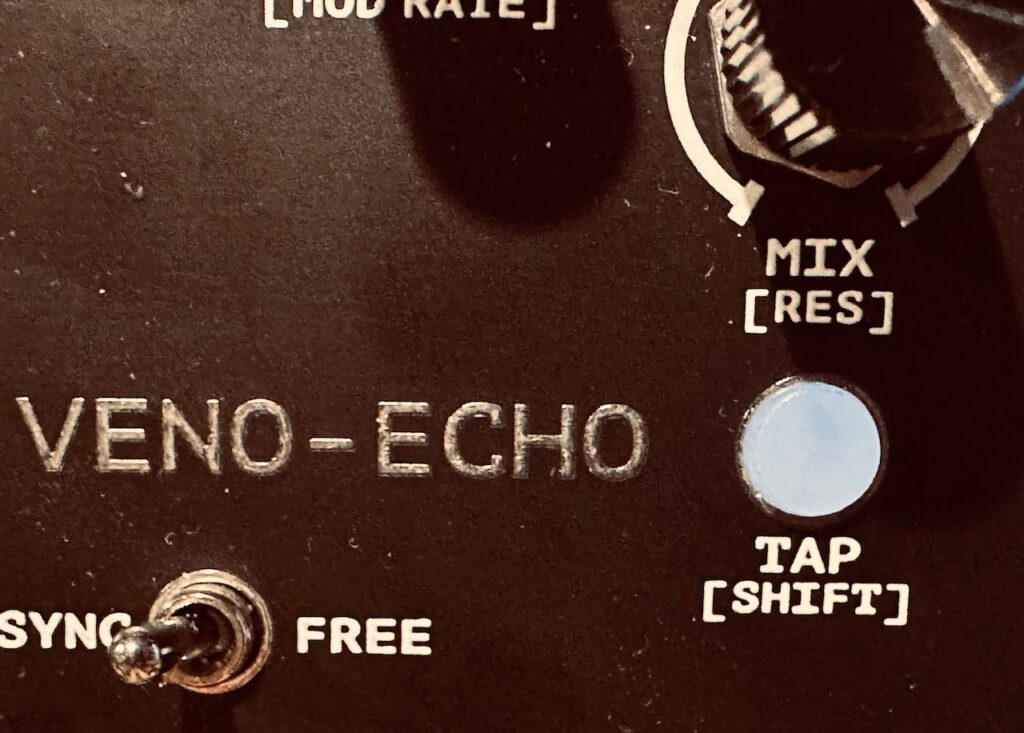

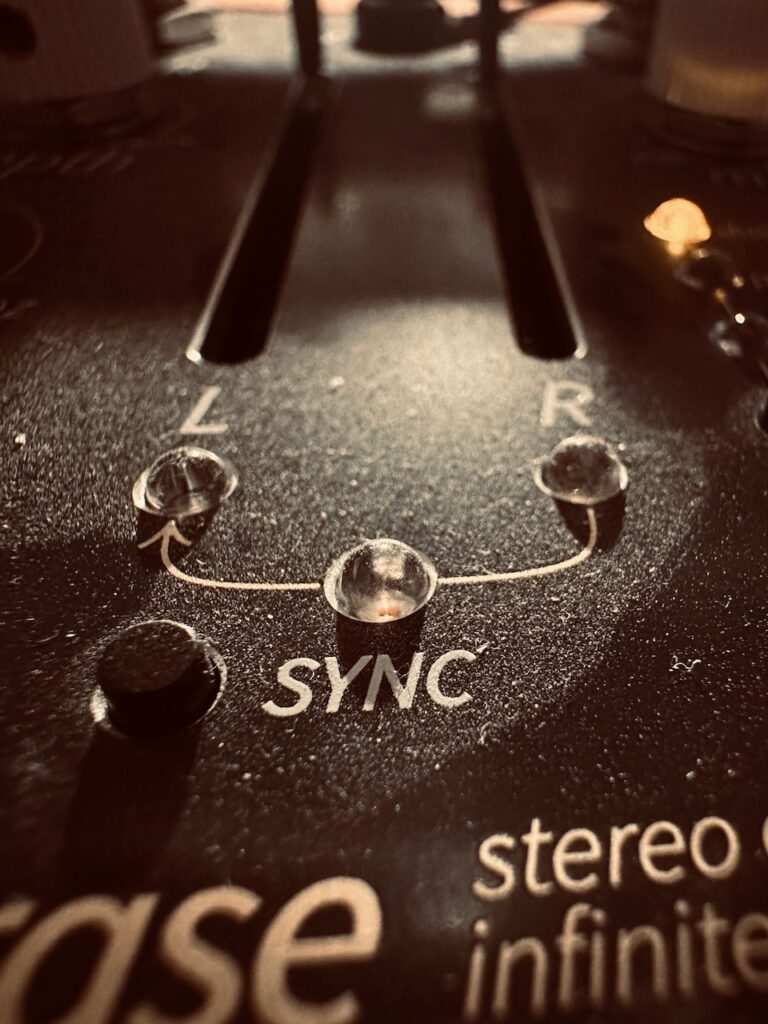
Although I wouldn’t describe Fall as inherently lo-fi sounding, it can definitely get in that territory via its control over bit depth. We can go from crisp 32 bit resolution down to a cascade of distorted, bit-reduced blocks, with the Init settings at a fairly low 13 bits. It’s not chiptune sounding by any means, but there is a certain dustiness to Fall that is charming. Wanting to get my clear filtered square waves closer to the OG Fall sound, I decided to patch in Malgorithm for some light bit and sample reduction. With Fall, the bit depth can be modulated by an internal LFO, for which I substituted a slow, cycling triangle function from the Joranalogue Contour 1 to bring the square wave from lightly bit and sample reduced to clean and back again.
But I didn’t want to just replicate Fall and call it a day. As instructive as replicating a patch or sound can be, I wanted more. I decided on using the Disting NT Poly Multisample with LABS Music Box samples, triggered randomly by the two lowest outputs of the CuteLab Missed Opportunities, using the Average output from Swell Physics as a pitch source via the Disting quantizer. I wasn’t unhappy with the results, not even a little, but I was unhappy when I discovered that things were a bit out of order because the oscillators weren’t tuned to a pitch, meaning the Fall notes and short plucks of the music box were playing in different keys. The registers are different enough that it doesn’t clash too strongly, but it has dissonance where there should be none.
I fed the output of the Disting NT to the Holocene Electronics Non-Linear Memory Machine, via the Addac 814 6×6 Stereo Matrix Mixer, with a fairly slow delay time. Like in a couple of Jamuary patches, I occasionally froze and scanned the buffer for a granular-like effect which I find absolutely charming. The wet and dry signals were mixed in a Knob Farm Hyrlo at about an 45/55 mix and sent to the output mixer for some reverb.
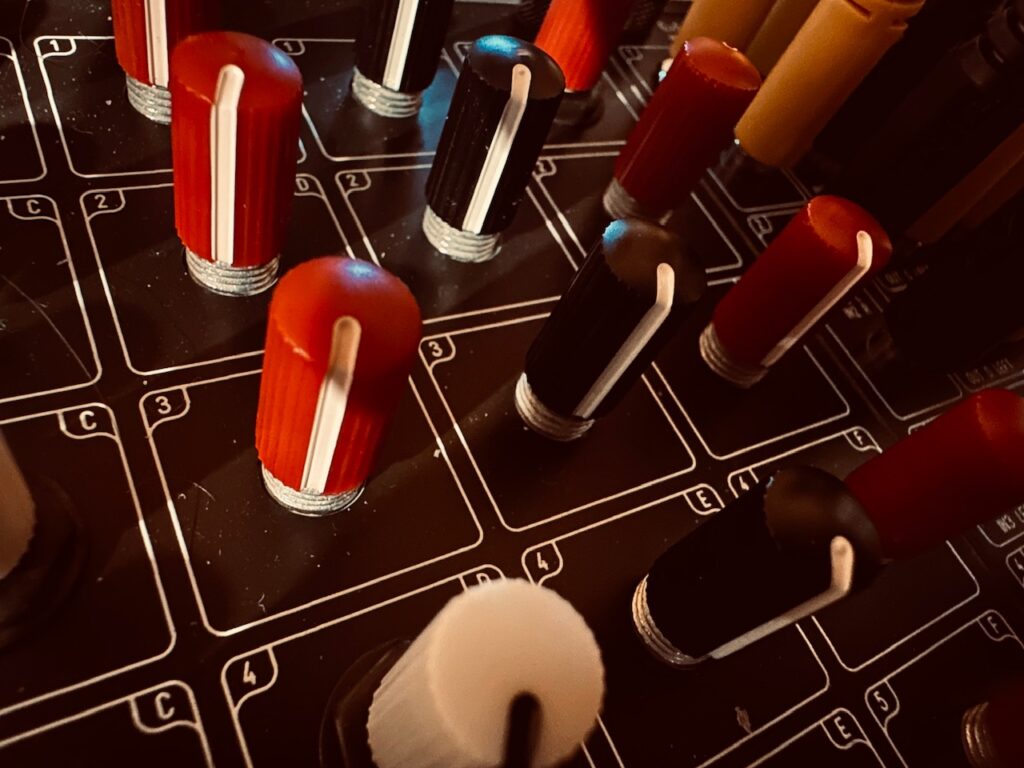

The last voice in this patch was Mutable Instruments Beads, playing grains in reverse at two octaves up. You know; for some sparkle on top. I initially only sent the “Fall” audio to Beads, then as the patch progressed introduced the music box samples to give the patch even more sparkle at the top end. Beads provided a nice flourish to the patch.
This patch interests me enough to want to improve it. Fall is a fascinating script, and I’d love to be able to get closer. I’ll definitely be making the adjustments I’ve identified and giving the patch another shot.
Rev 1
After recording this patch and listening back several times, I had ideas. I wrote furiously in my Notability notebook where I keep all of my synth and patch notes trying to suss out what changes I wanted to make, and the best way to go about making those changes. After a couple of days of writing I identified no fewer than eight different parts of the patch that I wanted to tweak, or at least think about tweaking. No part of the patch was left unexamined, and after writing and pondering I was ready to try again.
After tuning the oscillators to C2 and C3, as opposed to merely tuning them to each other at a random pitch value (it was ~Eb), the first change was to the envelope length. In my first iteration, whether through faulty memory or bad information, the envelope for each note was way too long. Something like three times too long, which caused other problems downstream in the audio chain. After fumbling around with a high level of uncertainty, coupled with the desire to be as close as possible to the Fall settings, I decided to run the envelopes to the Mordax Data in order to get their rise and fall times as close as possible to the Init settings. With this simple change the patch was instantaneously improved, and, as hoped, it did fix several other issues like pitches changing mid-note.1 It’s amazing how such a simple change can make such a huge difference. Although the Init settings in Fall imply that its envelope is a simple AD function, it’s not clear to me whether there is an appreciable curve in one direction or another. I decided to stick with a linear function unless I get some sort of clue or confirmation.
Things weren’t perfect, however, and it wasn’t something I’d noticed until I was deep into the recording: with shorter notes, more of them can be heard more clearly, and it dawned on me that although the cadence of gates hadn’t really changed, there were too many notes. When I had way-too-long envelopes controlling note generation during the original recording, many notes were camouflaged by others. By mid-recording on this revision (or thereabouts) I adjusted the Simulation Speed on Swell Physics to slow it down, and although that had the desired effect of creating fewer notes, it was still too many notes happening too quickly. It wasn’t slow enough, and their tendency to pile up, particularly with more discernible repeats, was a bit distracting, and caused a few problems in the process. Lots of notes with various levels of repeats created dissonance, and even if it wasn’t overwhelming most of the time, it was noticeable too much of the time. At least to me. The cadence wasn’t overwhelmingly fast, but, between the notes and their various echoes, the cadence was just quick enough to still have too many notes floating about simultaneously.
Although I didn’t make any appreciable changes to the delays themselves, the delay times stayed the same, I did add slightly more feedback, and adjusted their levels in the matrix mixer to be closer to that of Fall. In the first recording I had the delays both set at about 3 o’clock on the dial. That’s roughly 75%. In Fall’s Init settings, the delay “Gain” is listed as “.400” and “.600” for the short and long delays respectively. Although it’s not exactly clear just what that means, I’ve interpreted those settings as roughly 40 and 60% of the dry level. Even if I was wildly off in my hypothesis, the results bore positive results. The delays no longer overwhelmed the dry signal, and it added a more somber tenor to the patch, with repeats drifting in the distance on different time scales. Just beautiful.
I briefly considered consolidating this part of the patch down to a mostly Frap Tools affair by switching oscillators from the Quad Operator to using the EOR gate outputs on Falistri as square/pulse wave generators, but it would have required a fairly major overhaul to the patch, including installing a new case which I do not like doing while there’s cables hanging everywhere, and so quickly decided against it. Besides patch consolidation, I’m not convinced that there would have been much difference.
Another problem faced in this iteration is that there were too many Music Box notes too. There was just a tad too much CV going to the Density input on the CuteLab Missed Opportunities, which resulted in too many random triggers. This too wasn’t something I’d noticed until well into the recording, and even when I tried to alter it, I didn’t do enough to save the recording. I also worked on the wet/dry mix between the Music Box samples and Non-Linear Memory Machine, allowing the echoes to be a bit more prominent, emphasizing when the buffer was frozen and being scanned. Even just this simple level adjustment between dry and wet was a drastic improvement to this voice, even if I’d still add yet more in the next revision.
Rev 2
Still not yet content with the recordings I’ve captured, I once again started to identify tweaks to make. Too many “Fall” notes. Too many Music Box notes. Not enough feedback or level from the long delay. Wanting to change something about Beads, but not sure what.
My first challenge was getting the Fall cadence down to something manageable. Enough notes to remain relevant in the patch, while not becoming a distraction. My first idea was to simply lower the Simulation Speed on Swell Physics, and while that had an effect, the effect was too great. I was at a point with far too few notes, oftentimes hearing the long echo repeat two or even three times without another note being produced, leaving the space too sparse. I knew that speeding the simulation up again would lead back to too many notes, so I tried a different solution: using Stackcables to combine gates in Numberwang. The switching in Numberwang’s outputs wouldn’t happen any faster, the input signals controlling Numberwang were still running at the same speed, but more gate outputs were being used to trigger the same number of notes (six as opposed to four). These extra gates worked a treat, allowing notes to be triggered more often, but without being overwhelming.
But after several listens of this revision I’ve come to the conclusion that more notes are paramount. There are too many spots with way too much empty space. I’ll have to decide on whether raising the speed of the simulation, or a couple more Stackcables, or indeed a combination of both, is the best route to make that happen. But I’d like two to three notes every ten seconds or so, not one note every ten to 20 seconds as sometimes happened while recording this revision. At first I had too many notes, now too few. Finding that medium ground is my key concern with the next revision.
Having the desire to somehow vary Beads in this patch, I changed how it would fade in and out of the mix by using the Swell Physics Average output to control the output levels via the excellent Intellijel Amps. Rather than being a constant volume once introduced into the mix, Beads faded in and out along with the flow of the wave simulation that controls most of the patch.
In addition to this change in Beads, I also used the same gate that allows Swell Physics to scan NLMM’s buffer to change the repeats to an octave up for a very nice effect. I very much enjoy scanning NLMM’s buffer. It’s an incredibly playful way of presenting a different side of the audio source. The overt aliasing when pitched (especially up) adds a character that is lively and expressive; bits of audio that crackle like sparks from a fire.
Rev 3
Immediately after hitting Stop in AUM, I thought I had captured the recording I was after. But as so often happens, the memory of a moment can be misleading. While recording, it felt right, but after even the slightest bit of examination, I knew I needed more notes. The recording was simply too sparse: the noise floor being the only thing audible in too many spots, which is a weird thing with multiple overlapping delays. This isn’t to say that every second of every recording needs to be filled with something. John Cage showed us that a recording need not be filled with anything. Silence is a fantastic juxtaposition to sound, but too much silence can leave a listener bored rather than enraptured with anticipation, and that’s the feeling I had after listening to revision 2.
Getting more notes in the Fall pattern was my only real priority in this recording. I’ve been after that perfect cadence the entire time, and I hadn’t yet found it. While studiously examining how the gates fire from Numberwang and its relationship to Swell Physics, I tried everything I could think of. Increasing the wave simulation speed, adding another Stackcable, cursing the gods, but it wasn’t until after a while that I discovered that gate generation started to slow and then stall for a bit when the Swell Physics waves were collectively in a trough, all of them well below 0v. Once the waves started to move upwards again, the gates would fire more or less how I wanted them to fire, but I knew that the collective signals from Swell Physics needed some positive offset to keep them below 0v for much less time.
There’s still a bit too much silence in a couple of spots of Revision 3 while Swell Physics was in a lull, particularly from about 2:17-2:42 of the recording, but after several days of trying to proverbially shove a square peg into a round hole, I finally came to accept that Swell Physics was simply the wrong tool for replicating the falling of leaves. Both are chaotic processes, but they are still fundamentally different from one another in a lot of ways. Falling leaves don’t oscillate, they only go downwards, while ocean waves move both ways. If I want to replicate the falling of leaves in any meaningful way, I need a different algorithm in my patch to get me there, and I think I have an idea, though that will be for another day.
Rev 4 – A Rework
When I was done with Revision 3, I was content to tear the patch down and maybe come back to it another day. But there was a gnawing in the back of my mind. As I was writing what was going to be the conclusion to this post, an idea sprang to mind about how to better cadence my interpretation of Fall.
I thought about what sorts of movement I could create that was in the direction of falling leaves, and immediately thought of a saw wave, or falling ramp. The start of each cycle would be the moment a leaf breaks away from the tree, and the fall time that leaf’s journey to the ground. But I also knew that I couldn’t just have cycling saw waves. That would create an unwanted pattern, so I chose the Addac506 Stochastic Function Generator as the new engine of the Fall portion of this patch. Every time an envelope cycled the Addac506 randomly assigned a new fall time to the function within a pre-determined range, and the End Of Cycle outputs triggered the quantizer and envelope for the Fall note. Each leaf fell at a different rate, just as leaves falling from a tree do. The functions themselves were patched to the CV input of the quantizer, via the Vostok Asset for some attenuation and offset. After un-patching Swell Physics and re-patching the Addac506, I realized I made an absolute rookie mistake.
Normally when I’m creating a polyphonic patch, I keep everything fairly orderly. The first trigger goes to the first envelope generator which goes to the first filter, etc. Having quad modules like Quad Operator, CUNSA, the Addac506 and 508, dual Natural Gates, Sum Mix & Pan, etc. generally make polyphonic patches a much easier proposition. But when an End of Cycle trigger is a patched to a quantizer with that channel’s function as CV input, you will always trigger at 0v (unless there is an offset on the function). Not cool. Every trigger is the same note! To remedy this mistake, I simply switched the functions around in the Vostok Asset, with the Ch 4 and Ch 1 envelope outputs, and the Change 2 and Ch 3 outputs. Once I made the switch, each end of cycle triggered a different envelope, and not its own, resulting once again in random pitches.
With this new engine in place the Addac506 drove the patch at a much better and more evenly distributed cadence. I could change it easily by adjusting the fall time range, and it was much more consistent than when I used Swell Physics. Lulls in note creation disappeared, and overall the patch became much easier to control.
All of the delays and other effects remained the same with the exception of how I froze and scanned the buffer on the Non-Linear Memory Machine. The method was the same, but rather than using Swell Physics gate outputs I used one of the End Of Rise gates on the Addac506.
Conclusion
Though I’m sure there could be many changes made to get a better recording, I’m happy enough with the result of this fifth version to finally move on. My re-imagining of Fall, though not perfect, is a credible stand-in and I’ve found a new way to facilitate patches like it. The Addac506 has turned into something resembling a super-modulator. A very flexible module offering several methods to create different timing systems and control entire patches.
Overall, this was a very fun patch to make. Trying to mimic a sound or patch can be very instructive, and this patch was no exception. The process of revising a patch can be a tedious one. Small changes and decisions often have an impactful outcome.
Modules Used:
Addac System Addac508 Swell Physics
Addac System Addac506 Stochastic Function Generator
Addac System Addac814 6×6 Stereo Matrix Mixer
Nonlinearcircuits Numberwang
Nonlinearcircuits Divide & Conquer
Humble Audio Quad Operator
Frap Tools Falistri
Frap Tools CUNSA
Vostok Instruments Asset
Calsynth uO_C (Quantermain)
Expert Sleepers Disting NT
CuteLab Missed Opportunities
ST Modular Sum Mix & Pan
ST Modular SVCA
Intellijel Amps
Intellijel Quad VCA
Knob Farm Ferry
Outboard Gear Used:
Vongon Polyphrase
Vongon Ultrasheer
- These changes didn’t completely alleviate rogue pitch changes, you can hear one in quite literally the first note of the recording, but it greatly reduced them. I’m pretty sure that first untimely pitch change is the only one in the recording. ↩︎
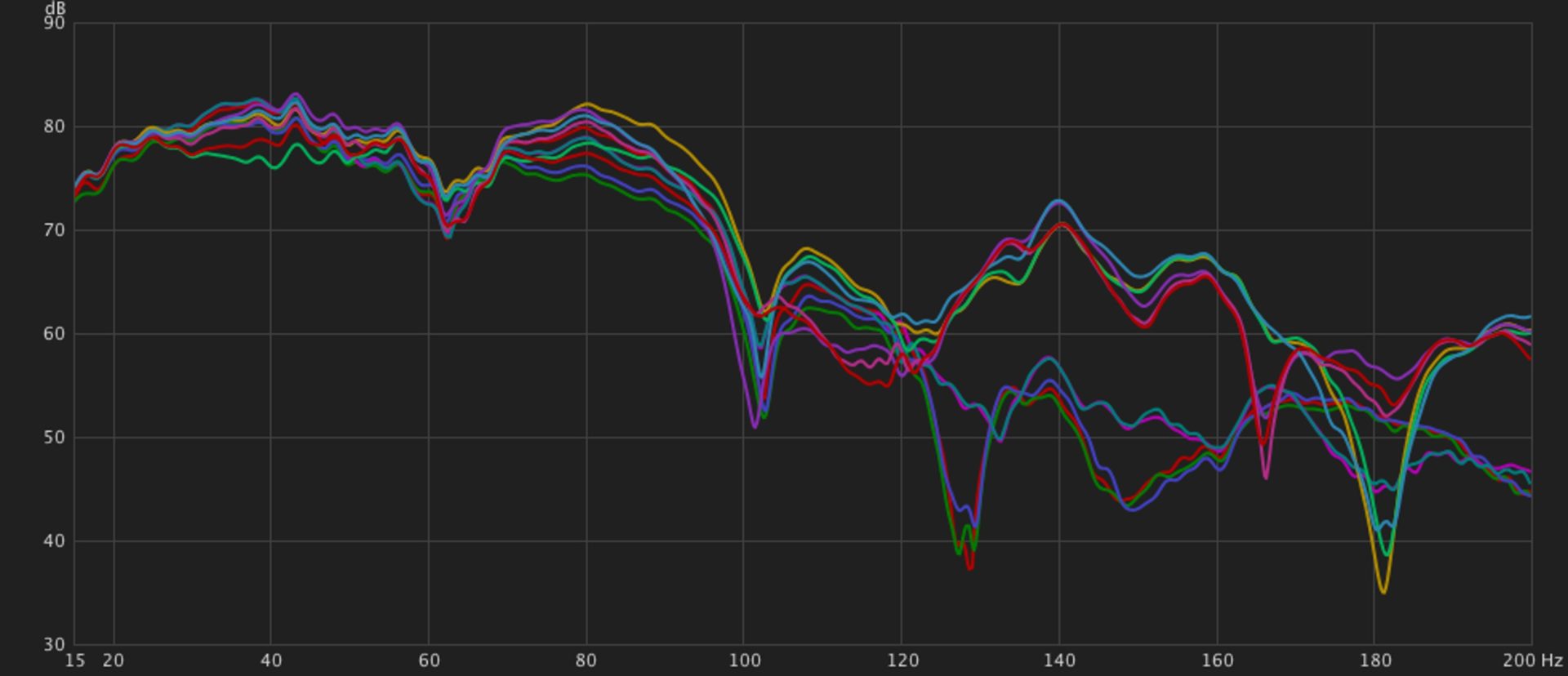















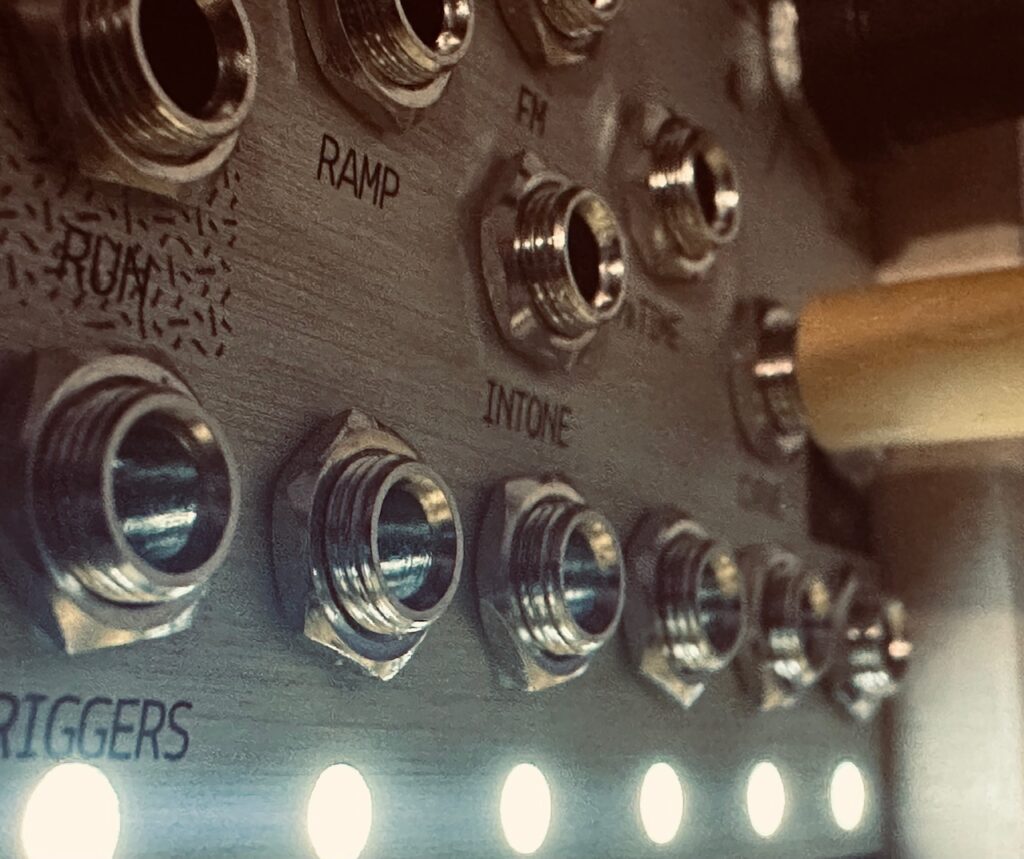
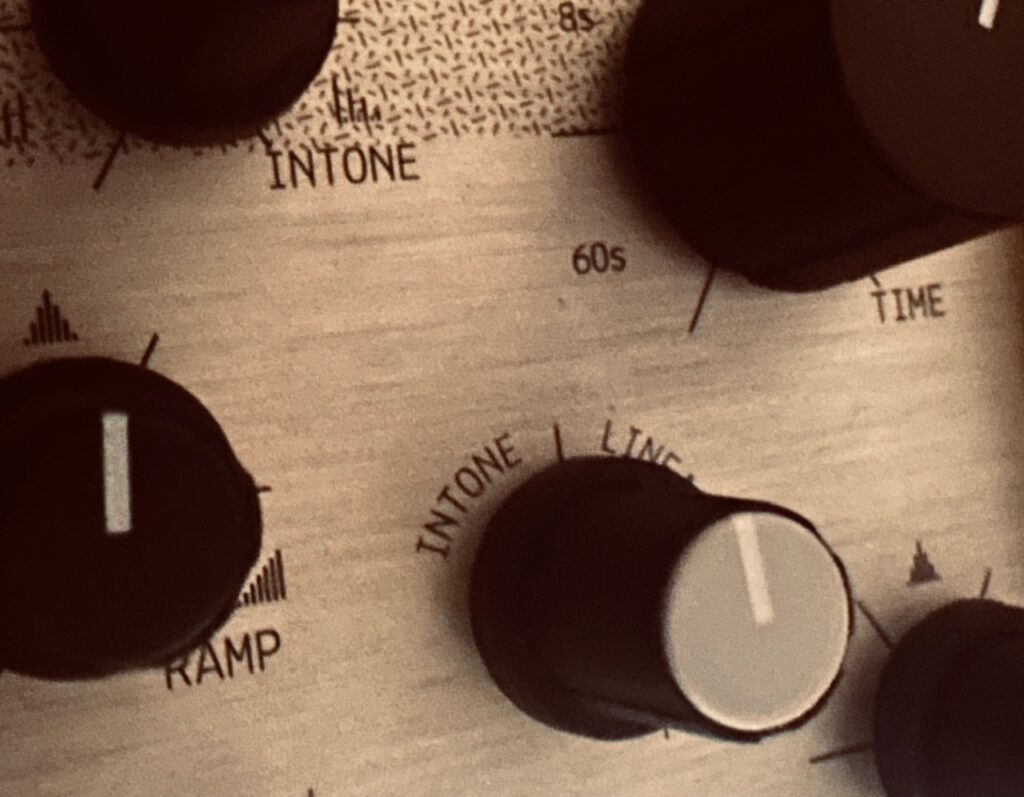
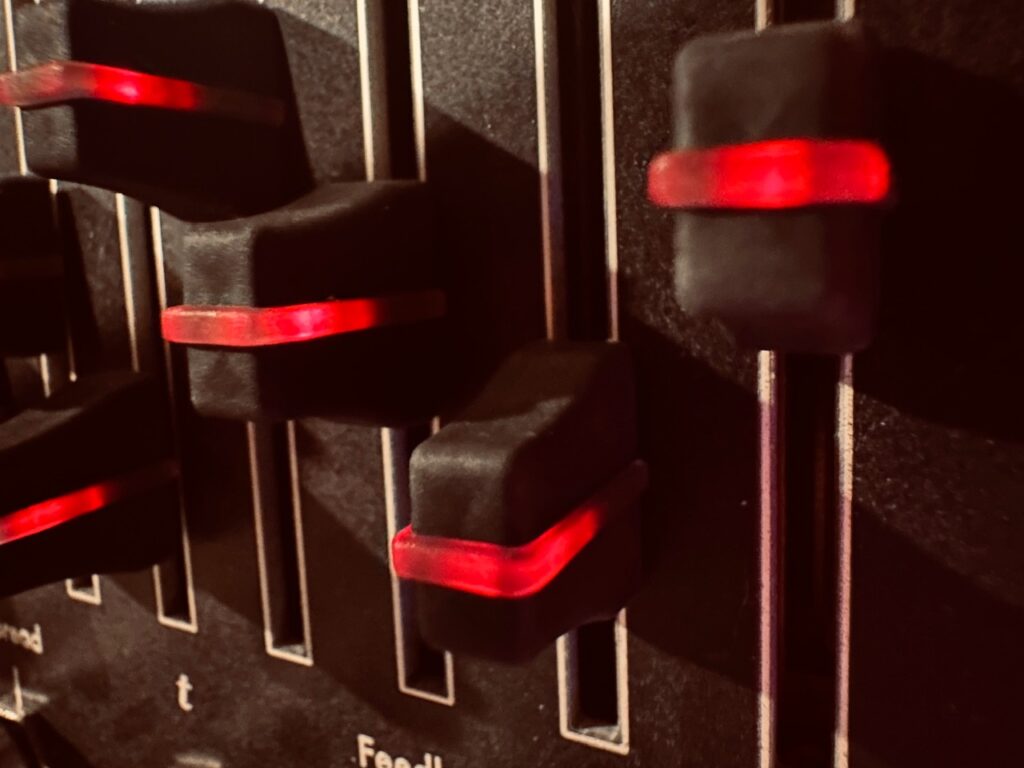
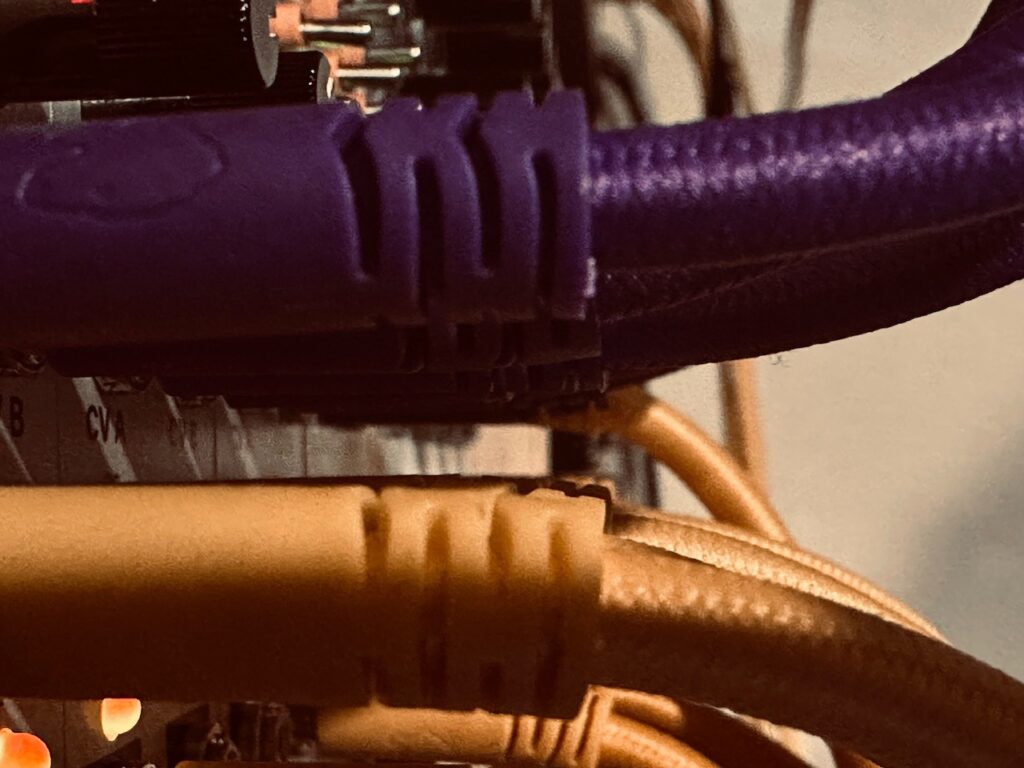
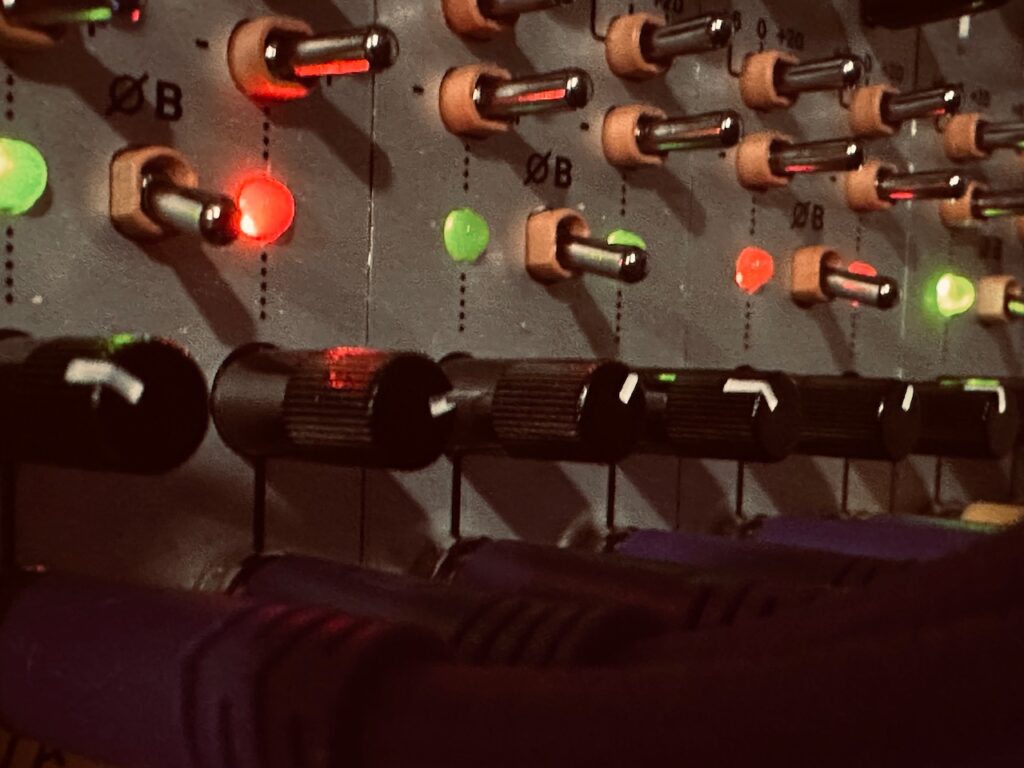
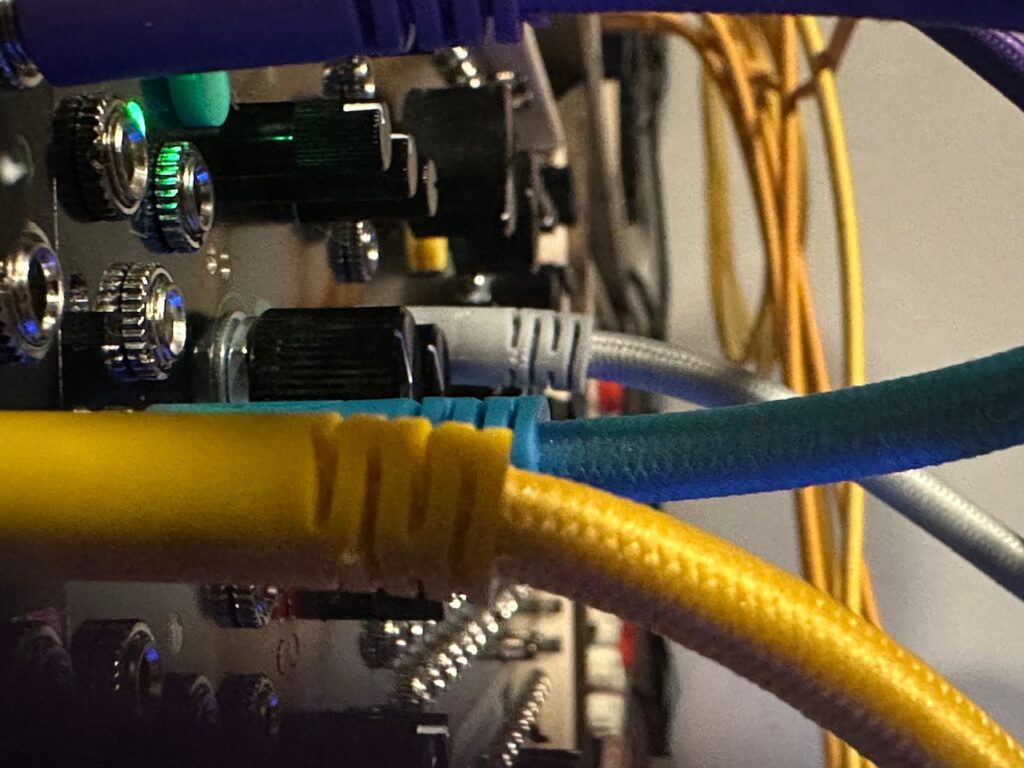
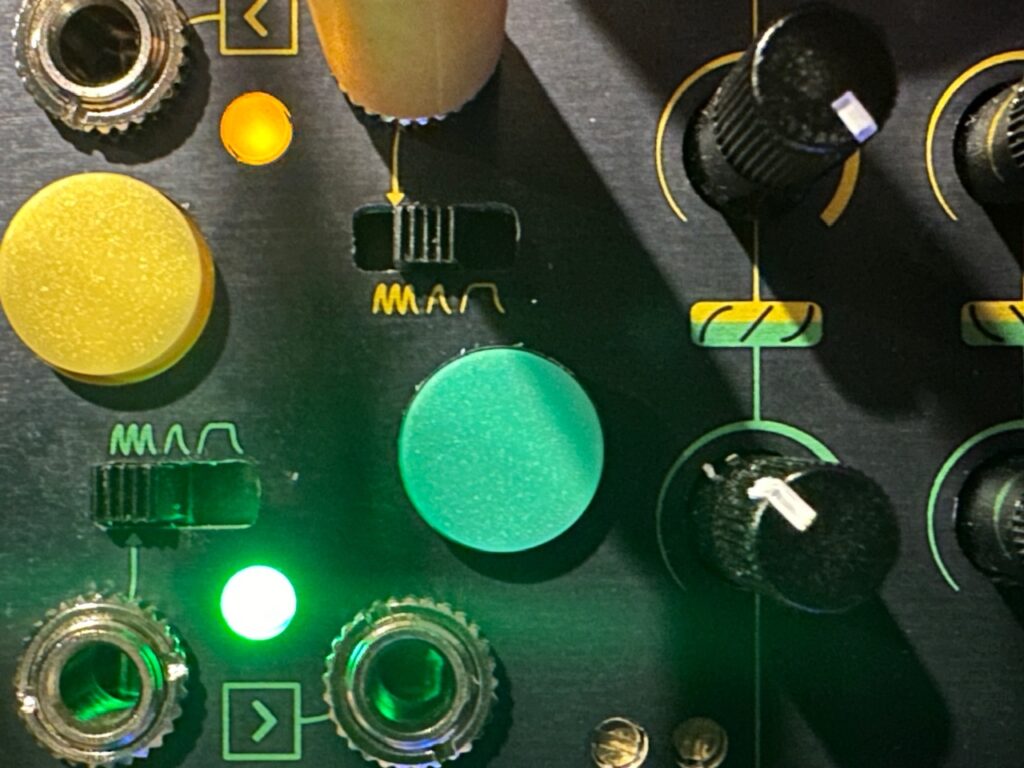
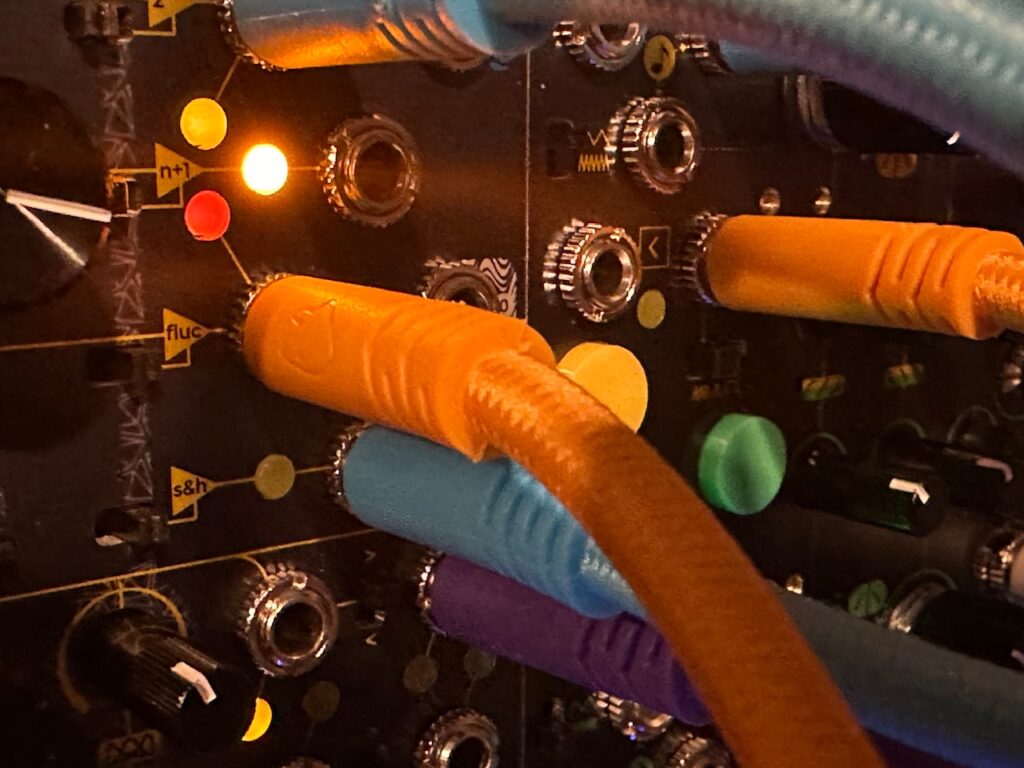
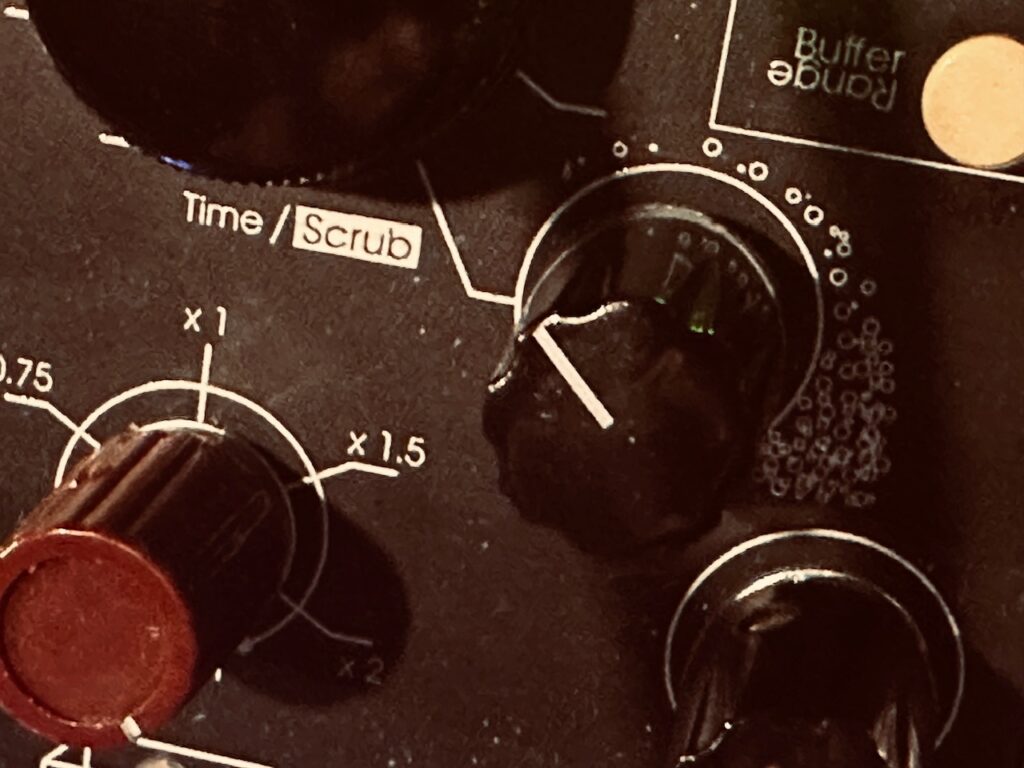
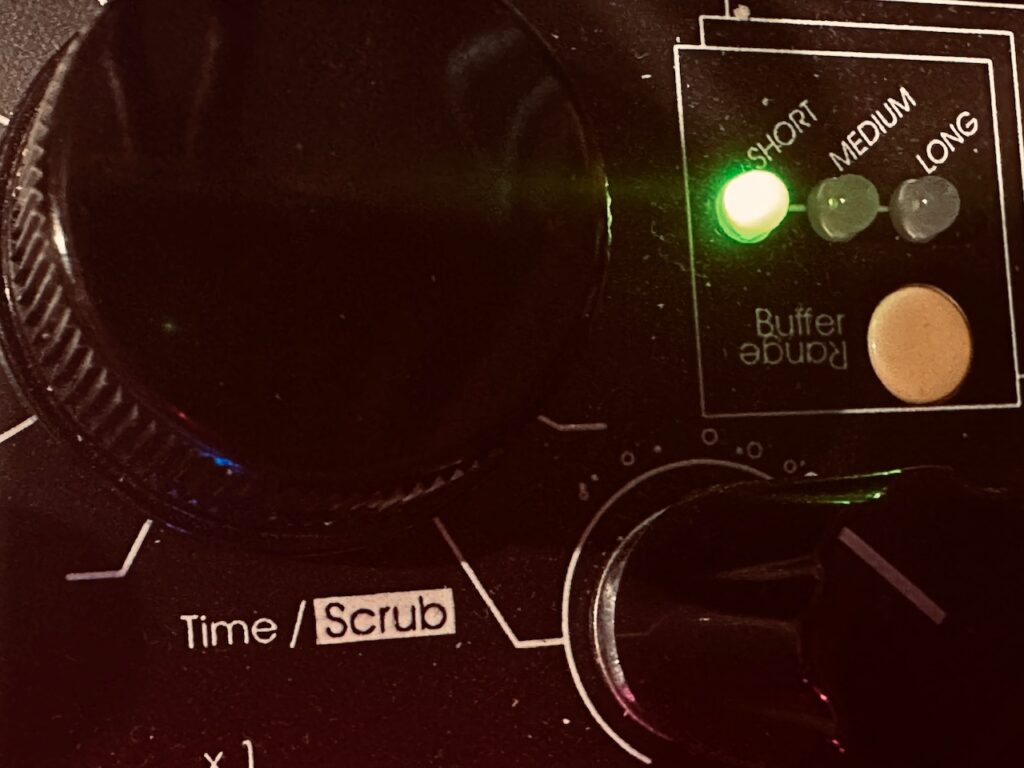
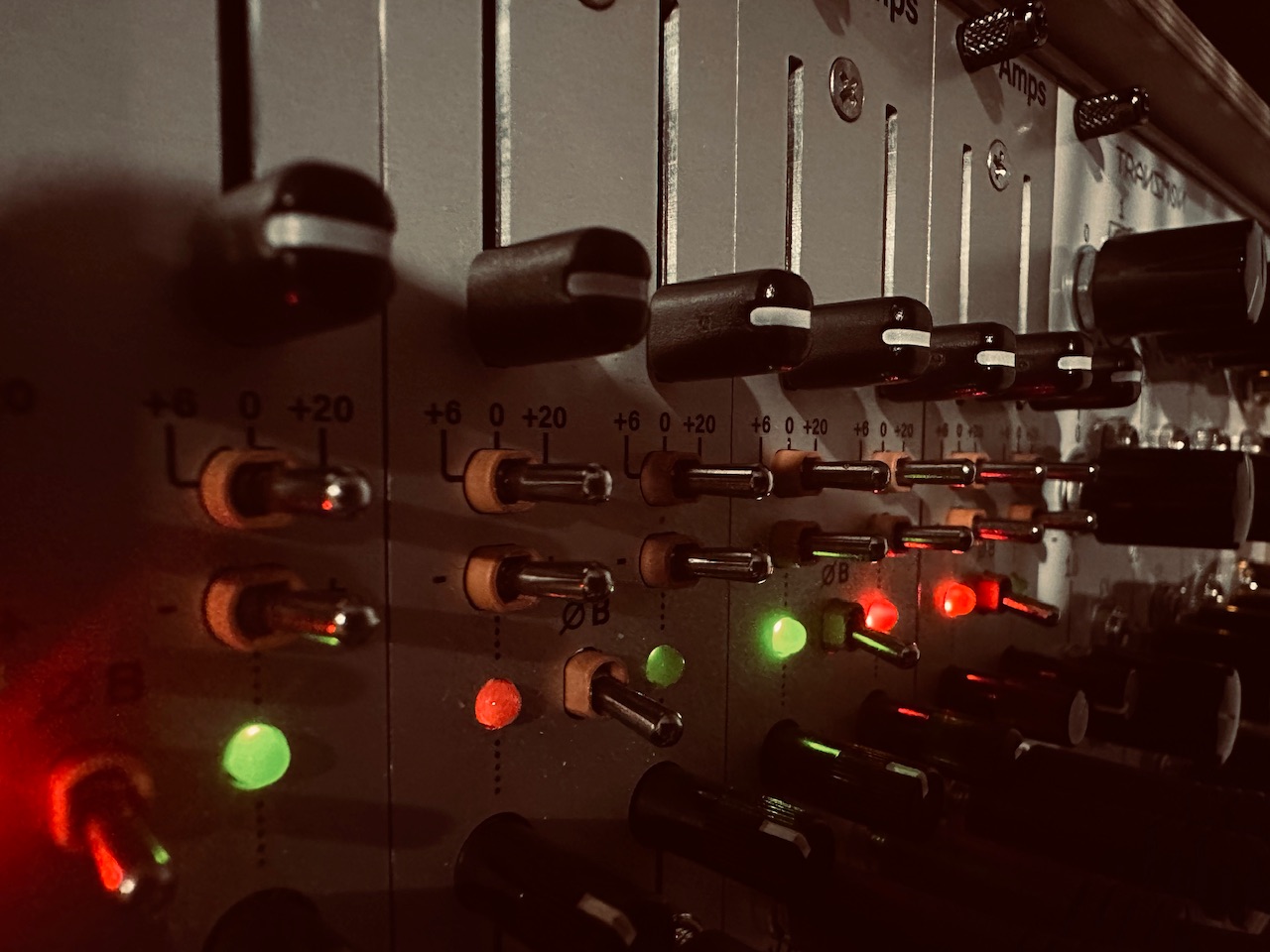
 – I’m also not convinced it isn’t lost in the mix).
– I’m also not convinced it isn’t lost in the mix).